Simple practices for greater calm and confidence
How to Grow Stronger in Tough Times

APRIL 2019 mindful.org
Director, Yale Center for Emotional Intelligence, on staying connected Rewire Your Anxious Brain + JON KABAT-ZINN Listen to Your Body NEW FRONTIERS IN MINDFULNESS • KINDNESS WHEN YOU NEED IT MOST HONORING YOUR CONNECTION TO THE EARTH • INSIDE THE MIND OF A MEDITATOR
Dena Simmons Assistant
RESILIENCE
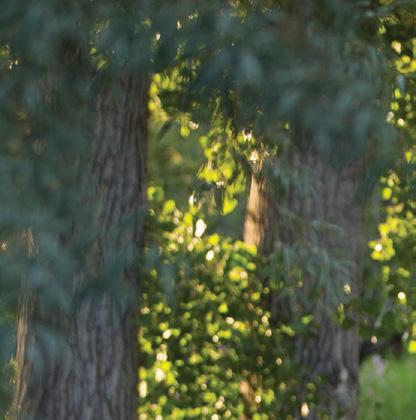

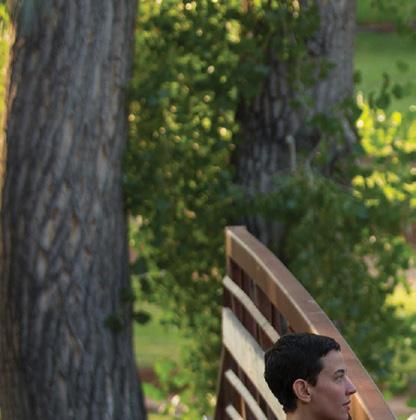












PHOTOGRAPH BY STEPHANIE DIANI
“Wherever I am, whatever work I do, I will find a way to make the world a better place.”
the
50 Rewire Your Anxious Brain Simple Practices for Greater Calm and Confidence 20 Kindness When You Need It Most 24 New Frontiers in Mindfulness 32 Resilience How to Grow Stronger in Tough Times 40 Honoring Your Connection to the Earth 62 Jon Kabat-Zinn Listen to Your Body 80 Inside the Mind of a Meditator ON THE COVER
REFRESH AND RENEW 3 Days of Guided Practices for SELF-CARE and REJUVENATION mindful.org/SpringRefresh CONTENTS April 2019 mindful 1
Dena Simmons, Assistant Director of the Yale Center for Emotional Intelligence, on
goal that most inspires her, p.36
april
SPRING
CONTENTS
april
FEATURES
40
Wake Up to the Wild
Wilderness expert and renowned mindfulness teacher Mark Coleman shares how he is learning to hold the intense beauty of nature— and devastation of climate change —in perspective.

50
Make Peace with Your Anxious Brain
The latest research in neuroscience is revealing how mindfulness can help rewire—and calm—ancient brain networks tied to stress, anxiety, and overwhelm.
62
Tuning In to the Body
Mindfulness pioneer Jon Kabat-Zinn explores the primary relationship between our physical body and our mind.

Mindful Living
18 Mindful Eating Creamy Contrast
It’s silky, subtle, and oh-so-spreadable. Here’s our take on the best way to savor an avocado.
20 Inner Wisdom
How May I Help You? A lesson on cultivating kindness in the most unlikely of situations: the customer service call.
24
Q&A: Taryn Toomey Blood, Sweat, & Fears Creator of The Class, Tayrn Toomey, wants to work out her issues. She wants to work out yours, too.
36 Walk the Talk Coming Full Circle For Dena Simmons, growing up poor in the Bronx meant discovering her unquenchable inner strength.
Departments
4 Point of View Please Excuse Me Modern life has fomented a contagion of rudeness. Barry Boyce on how you can respond with grace.
32 Brain Science
Picking Up the Pieces What causes us to move on from traumatic experiences? Psychologists find resilience is not always about bouncing back.
62
6 The Mindful Survey
10 Top of Mind
15 Mindful–Mindless
71 Bookmark This 80 MindSpace
40

PHOTOGRAPHS BY TIM FLACH / GETTY IMAGES, JOSHUA SIMPSON, AND KEVIN HORGAN / GETTY IMAGES
On our cover: Dena Simmons, Assistant Director, Yale Center for Emotional Intelligence Photograph by Stephanie Diani. Hair and makeup by Zianni Coats. Wardrobe by Angelina Vivace for Ennis Inc. 50 2 mindful April 2019
 Barry Boyce Editor-in-Chief barry@mindful.org
Barry Boyce Editor-in-Chief barry@mindful.org

Our must-read story this issue: In “Wake Up to the Wild,” on page 40, renowned mindfulness teacher and wilderness expert Mark Coleman reveals why our relationship with nature is more important than ever in the age of climate change.
Please Excuse Me
An older man and woman carrying packages and two small children make their way onto a subway car— by all appearances grandparents with their grandchildren, who also are carrying bags. No one gets up to offer a seat, not even the young athletic man wearing earbuds.
The elevator door opens and you’re about to get out, but several people, eager to enter, are blocking your exit. You have to jostle through.
On the way into a mindfulness event, I encounter a man who nearly knocks me over as he leaves the event, intent on whatever is on his phone. Excuse me is not in his vocabulary.
Is the speed of our lives and the many distractions in a universe flooded with information making us ruder? It may be. Even at mindfulness conferences, I’ve noticed people roughly jostling to get to someone famous or had people stop listening to a conversation as they drift off into the world of their phones. I cannot say I’m a paragon of manners at all times, and there are definitely times when someone should interrupt me in mid-sentence or even before I open my mouth. Nevertheless, like others, I find an increased ignorance of the effect we’re having on those around us. Just the other day, I got a text from a close friend I was waiting to hear from. I stopped dead in my tracks to read it, blocking traffic at a museum and disengaging from the people I was with. My wife gave me a look. Wow. I need to up my game here, I thought. It’s just way too easy to lose track of those around me and
get caught up in my little world. It always was, but our devices and the speed of life are making it worse.
Being attentive to what’s going on around us and where we fit in is indeed an element of our basic mindfulness, an outgrowth of the sensory system called proprioception (See Jon Kabat-Zinn on this topic on page 62). And yet mindfulness is not about walking on eggshells and constantly minding our P’s & Q’s. There’s a certain natural flow we can tune in to—in a conversation, in a crowd walking down the street, in a group of people sharing a meal. When we click, it feels good; when we don’t, it’s awkward, and even allowing it to be awkward is part of being mindful. No need to fix everything.
Not only is it unwise to misinterpret mindfulness as hypervigiliance, there is also a common trap that can lead us down an unhelpful path when we take up practices intended to sharpen our mindfulness and awareness: the trap of self-absorption. Because mindfulness asks us to pay attention to ourselves, we can gradually turn it into an utterly self-involved project: the transformation of me. If we’re not careful, before we know it, our own intense focus on how the big-project-of-me is going causes us to forget to see others and where they are and what they need and what they’re saying.
Fortunately, just like coming back to the breath, it’s easy to come back to the people around us, grateful for the opportunity to emerge from our self-inflicted dreamworld, and say “Excuse me, after you.” ●
VOLUME SEVEN, NUMBER 1, Mindful (ISSN 2169-5733, USPS 010-500) is published bimonthly for $29.95 per year USA, $39.95 Canada & $49.95 (US) international, by The Foundation for a Mindful Society, 228 Park Ave S #91043, New York, NY 10003-1502 USA. Periodicals postage paid at New York, NY, and additional mailing offices. POSTMASTER: Send address changes to Mindful, PO Box 469018, Escondido, CA 92046. Canada Post Publication Mail Agreement #42704514. CANADIAN POSTMASTER: Send undeliverable copies to Mindful, 1660 Hollis St, Suite 205, Halifax, NS B3J 1V7 CANADA. Printed in U.S.A. © 2019 Foundation for a Mindful Society. All rights reserved. 4 mindful April 2019 PHOTOGRAPH BY MARVIN MOORE point of view

Stress Happens
and simply paying attention to it can teach us a lot about ourselves. Here's what Mindful readers answered to our survey on stress.
“Eliminating electronics that are connected to work.”
“Recognizing that I am stressed in the first place, which allows me to do what I need to do to help me cope.”
What do you find effective for coping with stress?
“Deep breathing and figuring out what emotion I am really feeling.”
“Playing music, walking in the bush and near the sea.”
“Attending support groups, journaling, and using my creativity.”
“Sitting on the beach and reading.”
“Mindfully working in my vegetable garden.”
What time of day do you ruminate the most? Do you sweat the small stuff? What's small stuff?
30% In the middle of the night
36% Evening
20% Morning
14% Afternoon
33.65 10.10 56.25 14.01 20.29 29.47 36.23
10% 56%
34%
6 mindful April 2019 the mindful survey
Not often
Yes
Do you find it helpful to talk to others about stress?

56.19 21.9 11.9 10 77.39 33.48 23.04 56.96 28.7 42.17 36.09
do you experience stress?
How
74% Feelings of anxiousness 36% Brain Fog 42% Insomnia or fatigue 29% Withdrawing from life 57% Grouchiness or loss of temper 23% Headaches 33% Changes in eating habits or cravings 10% I don't talk about stress 12% No, it doesn't help 22% I'm not entirely sure 56% Yes April 2019 mindful 7
Thank you!
Editor-in-Chief Barry Boyce Interim CEO
Editor Anne Alexander Editor, Digital Heather Hurlock
Production Editor Stephanie Domet
Associate Art Director
Spencer Creelman
Editorial Assistant
Amber Tucker
Editors-at-Large
Kaitlin Quistgaard
Hugh Delehanty
Consumer Marketing Director





Daniel Scott
Circulation Planning Director
Catherine Flynn
Audience Development Manager

Leslie Duncan-Childs
Fulfillment Manager
Rebecca Pearson
Administrative Assistant
Sarah Creelman
ADVERTISING INQUIRIES
Kevin Gillespie Advertising Director kevin@mindful.org
Editorial & Central Business Office 5765 May Street, Halifax, Nova Scotia, B3K 1R6 Canada mindful@mindful.org
Editorial Inquiries
If you are interested in contributing to Mindful magazine, please go to mindful.org/submission-guidelines to learn how.

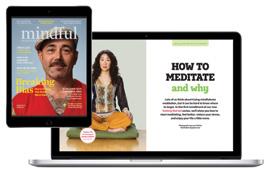
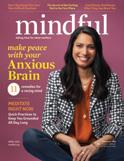


Bryan Welch
Art Director Jessica von Handorf
Senior Editors
Claire Ciel Zimmerman
Kelle Walsh
Deputy Editor, Digital Stephany Tlalka
Associate Editor, Digital Nicole Bayes-Fleming
Contributing Editors
Katherine Griffin
Teo Furtado
Barbara Graham
Business Development & Partnerships Director
Julia Sable
Controller

Kenneth Swick
Human Resources Manager
Cindy Littlefair
Graphic Designer
Christel LeBlanc
Chelsea Arsenault Advertising Sales Coordinator Toll Free: 888-203-8076 chelsea@mindful.org
Customer Service Subscriptions: Toll free: 1-855-492-1675 subscriptions@mindful.org

Retail inquiries: 732-946-0112
Moving? Notify us six weeks in advance. We cannot be responsible for issues the post office does not forward.
THE FOUNDATION FOR A MINDFUL SOCIETY
Mindful is published by the Foundation for a Mindful Society. The Foundation’s mission is to support mindfulness champions to increase health, well-being, kindness, and compassion in society.

 James Gimian Executive Director
James Gimian Executive Director
Chris
McKenna
Mindfulness in Education Program
Manager
Board members
James Gimian, Michael Chender, Susan Kaiser Greenland, Andy Karr (acting chair), Barry Boyce
donate
Did you know Mindful is a nonprofit? We are dedicated to inspiring and guiding anyone who wants to explore mindfulness to enjoy better health, more caring relationships, and a more compassionate society.
By reading Mindful and sharing it with others, you’re helping to bring mindfulness practices into the world where the benefits can be enjoyed by all.
Park Avenue
New York, NY 10003-1502 USA
make a donation to the foundation today by visiting mindful.org/donate
228
S #91043
Please
Welcome to MINDFUL MAGAZINE • MINDFUL.ORG Get More Mindful Print magazine & special topic publications 30 Day Mindfulness Challenge
Healthy Mind, Healthy Life Mindfulness video courses FREE! Guided meditations & podcasts Visit online at mindful.org 8 mindful April 2019

Top of Mind
Mindful lawyers and lawmakers
A professional association for lawyers in the UK announced in November that it
will “offer facilities” for members to practice mindfulness, following a trend in legal circles throughout the UK and abroad.
British Parliament
has offered mindfulness training for members since 2014, as does Swedish Parliament. The American Bar Association
advocates for the practice, even publishing a book about it in 2016.
Sipping on mindfulness


What would you do for a cup of tea? San Francisco’s Samovar Teahouse offers “mindfulness tea” at no charge, if you agree to drink
Stacked rocks: a not-so-mindful cliché
it mindfully. That means no using your phone and no chatting, and simply sipping for 60 whole minutes.
Owner Jesse Jacobs, a longtime meditator, says he sees it sparking curiosity around mindfulness, though not all customers are eager to dive in and try it. “As a social experiment, it’s brought people’s consciousness up to the challenge,” says Jacobs, “so they can start by asking, Why is this practice difficult for me? ”
A go-to symbol for mindfulness, meditation, and all things contemplative, stacked rocks may not be so mindful after all. This seemingly benign, Instagram-friendly activity can have destructive effects on sensitive ecosystems. While stacking rocks is a traditional practice in several cultures, including Native American, Scottish, and Scandinavian, in recent years it has become a socialmedia-fuelled phenomenon that, in a Facebook post from September 2018, the Zion National Park in Utah referred to as “vandalism.”
More than that, the post explained, the practice can harm wildlife and contribute to the erosion of shorelines. Perhaps it’s time we practice letting the rocks be.
Racing cars, not racing minds
The Mercedes Formula One racing team’s got a secret weapon for staying ahead of the pack in the past several seasons. You guessed it: mindfulness. The team is close
Keep up with the latest in the world of mindfulness.
MINDLESS ROCKS
CHANGING HANDS
PHOTOGRAPHY
BY RAWPIXEL, THOMAS REY, DREW TAYLOR / UNSPLASH, FLASHBROS / PEXELS
to matching Ferrari’s record of six straight drivers’ and constructors’ championships. The team’s CEO, Toto Wolff, says mindfulness is a key way that team members can do “a better job than their opposite number at Ferrari.”
Is technology changing our hands?
For most of human history, we used our hands to cut and shape and measure
and sculpt our way through the world. In the age of computers and robotics, we use our fingers less and in fewer ways, which has caused Roger Kneebone, professor of surgical education at Imperial College, London, to posit that due to a lack of “craft skills” his students have less ability in the cutting and stitching involved in surgery. Time for a new “digital” revolution?
ACTS OF kindness

Uber driver Kasim Eldilemi spotted an injured hawk while driving along the multilane FDR Drive in New York City. So he threw on his emergency blinkers, pulled over, took the bird to his car, and drove his passenger to Brooklyn with the hawk under his arm. He then found police, who brought the bird to a rehabilitation center.
Poker champion Scott Wellenbach has been donating his winnings to charity since 2010. A regular meditator now in his sixties, Wellenbach recently won his biggest jackpot to date—$671,240— and will give it all to charities including Oxfam and Doctors Without Borders.
MENTAL HEALTH
UK ADDS MENTAL HEALTH MINISTER
FEELING FOGGY?
Try this: Give yourself five minutes to sit and gaze out a window. Notice the colors, shapes, and movements at play. Birds flying by, buildings standing solid—whatever you see, let it in.
21-year-old medical student Hamzah Selim was at a London Tube station heading home from an anatomy lecture when he heard a woman scream. He rushed over to find her in labor, and used what he’d learned in school to help deliver the baby on the spot.
On World Mental Health Day in October 2018, the UK government appointed health minister Jackie Doyle-Price to the role of Minister for Mental Health, Inequalities and Suicide Prevention. With 1 in 8 children and youth in the UK experiencing mental health issues, Doyle-Price will oversee the training of “mental health support teams” to work with young people in schools. The government will also partially fund the Samaritans’ free crisis hotline over the next four years.
COWS CAN HAVE RESILIENCE, TOO People handle stress in different ways—and so do cows, according to a recent study. PhD students in an animal welfare program at the University of British Columbia found calves’ ability to cope with typical stressors in dairy-cow life can vary significantly. Some calves showed signs of optimism and resilience, while others tended toward pessimism or fearfulness.

Everybody’s doing it!
More Americans are meditating than ever. According to the Centers for Disease Control, 4.1% of the adult population reported doing it in 2012 compared to 14.2% in 2017, an increase that outpaced even yoga.
FREE TEA
April 2019 mindful 11 what’s new
Research News
by KELLE WALSH
Research gathered from Greater Good Science Center at UC Berkeley, Center for Healthy Minds at University of Wisconsin–Madison, Center for Mindfulness at UMass Medical School, and American Mindfulness Research Association.
more employees,” the study authors wrote in a paper published in Physiology & Behavior
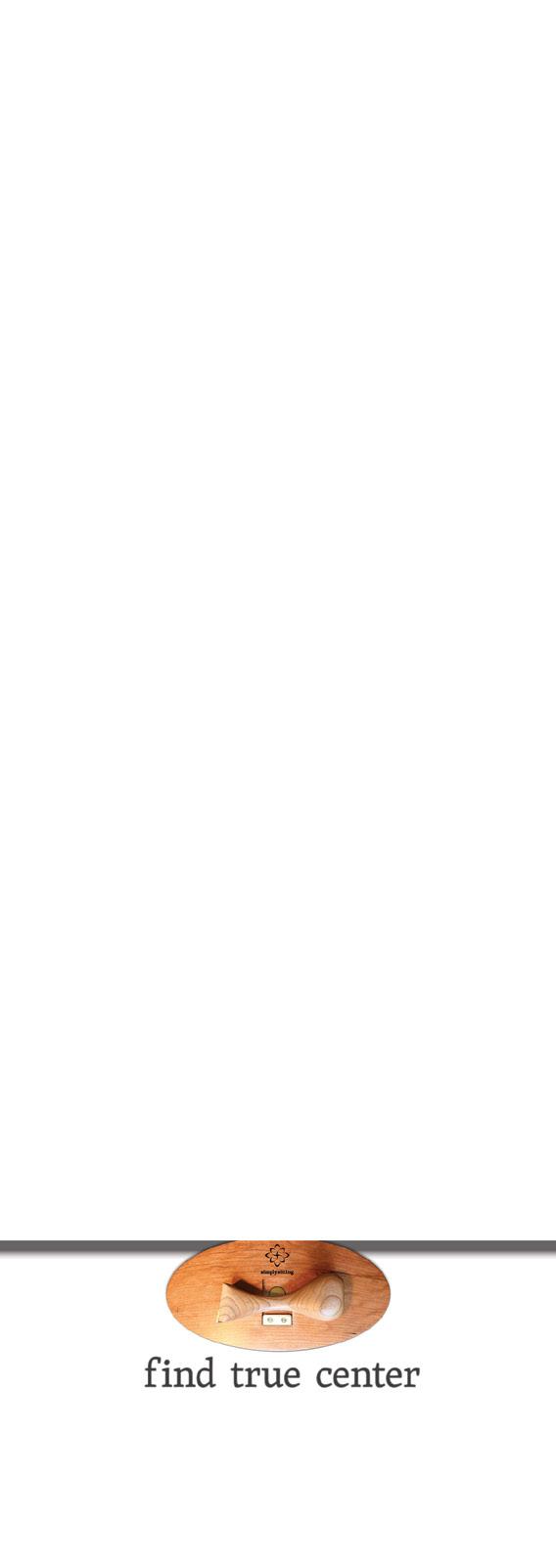
DOES ONLINE MINDFULNESS WORK?
A study in Australia found that an online 8-week Mindfulness-Based Stress Reduction program helps employees feel more optimistic and engaged in their work, and may decrease levels of striving and need for recognition. “While the ‘human element’ may potentially enhance the efficacy of face-toface MBSR programs, the online program is more easily accessed, and this may mean the benefits of these programs reach


HOPE FOR GLAUCOMA SUFFERERS
An innovative study has shown that meditation may help with glaucoma. The leading cause of blindness, glaucoma affects almost 70 million people worldwide. It’s characterized by intraocular pressure that progressively damages the optic nerve. The researchers randomly divided 90 glaucoma patients in New Delhi into two groups. One group was instructed in meditation focused on the
breath, and practiced an hour daily for three weeks. The other group did not meditate. After three weeks, 75% of the meditators showed a 25% reduction in eye pressure, while the non-meditators showed no difference. The meditators also experienced reductions in cortisol levels, oxidative stress, and other proinflammatory markers, and increases in betaendorphins. In a paper published in Journal of Glaucoma, researchers noted that chronic stress, which leads to increased blood pressure, provokes intraocular pressure.
“This study suggests that mental stress may be one of


12 mindful April 2019 what’s new
the main causal factors of glaucoma, and using [meditation] to reduce stress is a powerful tool to treat the patient as a whole and not just the eye, a holistic approach to manage the disease and also improve overall patient well-being,” said researcher Bernhard Sabel, PhD.
MORE MINDFUL, LESS PAIN?

In this follow-up to a 2015 study, researchers at Wake Forest Baptist Medical Center tested pain levels among novice meditators when exposed to heat stimulation. Observed under MRI, study participants who scored highest for levels of “dispositional mindfulness,” or someone’s natural, innate level of mindfulness, were less sensitive to the pain. Higher dispositional mindfulness correlated to greater deactivation of the posterior cingulate cortex, the region of the brain associated with


self and mindwandering. Those reporting feeling more pain had more activation in this same region.
“The results of our study showed that mindful individuals are seemingly less caught up in the experience of pain,” said lead study author Fadel Zeidan, PhD.

SUPPORT FOR TEEN MENTAL HEALTH


HELPING NURSES COPE
Nursing is one of the most taxing jobs in healthcare. A recent study set out to determine if MBSR could help relieve stress and increase resilience among nurses in general hospitals in mainland China. Following a modified MBSR program, and evaluated with questionnaires at baseline, immediately afterward, and 3 months later, the nurses who did the program reported decreased stress and negative affect, and increased positive affect and resilience.
MBSR has been widely studied and accepted as conferring important benefits to adults struggling with anxiety and depression. Less is known about its effect on teens with the same conditions. This controlled trial was conducted at an intensive residential mental health treatment program for adolescents over eight weeks. The teens, average age 14, were split into two groups, with one group receiving standard residential care, and the other receiving standard care plus a modified MBSR protocol that included weekly two-hour sessions and a three-hour retreat in week 8. The MBSR group “showed significant improvements” on measures including internalization of problems, namely depression and anxiety, and adaptive skills, like social and study skills and leadership.

www.YogisOnTheGo.com 214-550-2881 www.YogisOnTheGo.com 214-550-2881 April 2019 mindful 13 what’s new
Kathy Flynn-Somerville
PENNSYLVANIAN MINDFULNESS TEACHER

Lack of focus, bullying, teachers stretched too thin—these are just a few of the challenges inspiring schools across the country to bring mindfulness into the classroom. Among those leading the charge is Kathy Flynn-Somerville. A classroom teacher for over 25 years, she is on special assignment from Pittsburgh Public Schools, demonstrating and teaching mindfulness at all 54 K–12 schools in the district.

“When I go into a school, I’m trying to reach the entire school with each visit,” Flynn-Somerville says. She meditates with up to 300 students daily, returning for 10 to 12 sessions per school, a schedule that has made her presence familiar and welcome all over the city. When the school day ends, she has facilitated sessions with teachers and district staff. In addition to helping teachers manage the stresses of their demanding
jobs, the extra sessions help them model mindful behavior for their students.
That may all sound a bit hectic, but it’s working: The early results of the multiyear project speak for themselves. In research she’s conducted, Flynn-Somerville has found upward of 90% of students say trying mindfulness has helped them in some way—to manage strong emotions, to be more kind, to focus better in school. And nearly half have taught friends or family members how to do it.
The goal of FlynnSomerville’s work is to shift school cultures toward greater compassion, or as she says, simply “humanness.” In the meantime, her job keeps her firmly planted in the challenges at hand. “At the end of every day, I’m pretty exhausted,” she says. “But this has become the most important work of my career so far. I’m so happy to be doing it.”
PEOPLE TO WATCH
14 mindful April 2019 PHOTOGRAPH BY JASON COHN
Can a cold-blooded killer learn compassion from Walt Disney? One Missouri judge thinks so: He ordered a poacher, who’d killed hundreds of deer for trophy heads, to watch Bambi at least once every month during his yearlong jail sentence.
MINDFUL OR MINDLESS?

Our take on who’s paying attention and who’s not


 by AMBER TUCKER illustrations by JESSICA RAE GORDON
by AMBER TUCKER illustrations by JESSICA RAE GORDON

The key to romantic harmony: Don’t drink alone. University of Michigan researchers found US couples in which both or neither of the partners drinks alcohol reported sunnier relationships—for example, being less critical of each other—than couples where one partner drinks and the other abstains.

California recently enacted a bill banning pet stores from selling dogs, cats, or rabbits obtained from pet breeders, which can be hotbeds of animal abuse.
A Utah state worker goofed up by emailing a potluck invite to 25,000 state employees, spawning a “Reply All” nightmare—on a Friday, of all days. TGIF indeed.
Cops in Richland, WA, put a call-out on social media for wanted man Anthony Akers. To their surprise, Akers responded, saying he would turn himself in. When days passed and he didn’t show, the department lamented, “Is it us?”, to which Akers replied that he had “commitment issues.” The series of fakeflirty posts culminated in Akers posting a selfie at the station captioned, “Here for our date, sweetheart,” before turning himself in.
Megan O’Grady, a highschooler and daughter of a police officer in Florida, founded Blue Line Bears, a nonprofit to comfort families of police officers killed in the line of duty. O’Grady sews and delivers teddy bears personalized with the officers’ names and badge numbers. So far she’s gifted more than 450 bears. ●

MF ML
MINDFUL MINDLESS what’s new























































Read stories that matter to you. Discover new insights and practices each week. Save a library of your favorite articles. *Apple, the Apple logo, iPhone, and iPad are trademarks of Apple Inc., registered in the U.S. and other countries. App Store is a service mark of Apple Inc., registered in the U.S. and other countries. *Search Mindful Magazine in your preferred app store. Download the FREE Mindful App anytime, anywhere Inner wisdom for every moment from Mindful magazine and mindful.org Tap into
mindful living

PHOTOGRAPH BY VICTOR TORRES / STOCKSY
“Study nature, love nature, stay close to nature. It will never fail you.”
April 2019 mindful 17
FRANK LLOYD WRIGHT
Creamy Contrast
By Claire Ciel Zimmerman
Avocados are high in monounsaturated fat, which research shows can contribute to cardiovascular health. These fatty fruits are also a good source of:

Avocados strike a magical balance between creamy and light, their high fat levels paired with substantial water content. They grow around the world, from Australia and Indonesia to Peru and the US, but Mexico—where avocados are thought to originate from— is by far the top producer. In the world of fruit, avocados are uniquely buttery; in fact, before they became a luxury food item, some people referred to them as “poor man’s butter.” Their mild flesh pairs well with many flavors, making them an ideal creamy counterbalance to crunchy salads and crusty sandwiches. Some recipes even use avocado as a rich base for vegan desserts.
ENJOY AVOCADO MINDFULLY
With a fork, mash an avocado until you get it to a fairly smooth consistency. Take a taste on its own, then throw in a pinch of salt and notice how it affects the flavor. Next, add a squeeze of lemon juice and take another taste. What does the acidity add or alter? Does it affect how the avocado feels on your tongue? Savor this marriage of buttery and tangy on its own or follow the popular trend and spread it on a piece of toast. ●
ABOUT THE AUTHOR
• Vitamins E, C, K, and several B-complex vitamins
• Potassium, folate, and copper
• Dietary fiber source: whfoods.com
PHOTOGRAPH BY
ANIKO LUEFF TAKACS/STOCKSY
Claire Ciel Zimmerman is a senior editor and Mindful ’s Eater-in-Chief.
NUTRITION INFO 18 mindful April 2019 LIVING | mindful eating

How May I Help You?
A lesson on cultivating kindness in the most unlikely of situations: the customer service call.

I’m on my fifth phone call to the customer service line when I finally get an answer. After what feels like an eternity of pressing extension numbers, getting transferred, and being forced to listen to hold music that feels like a deliberate torture device, the maddeningly cheery customer service rep explains to me why the computer I ordered—and paid for—
ABOUT THE AUTHOR
is never coming. Ever. And then, to top it off, she has the nerve to tell me the company “appreciates my business.” I want to scream. I want to unleash my outrage and indignation on the woman paid to deliver this terrible news. But instead I take a deep breath and remind myself that we all want to be happy, appreciated, respected, and heard. And that includes customer service representatives.
For the past few months I’ve made it a conscious goal to shift how I relate to unwanted interruptions. I try to be mindful in all my relationships, but for some reason my good intentions can quickly go down the toilet in the
presence of a faceless pair of ears paid to listen to me rant. Spending hours on the phone being bounced around through call centers can incite strong emotions in me, such as outrage, victimization, and irritability. Sure, the call won’t last forever. Unfortunately, neither do the appliances, computers, warranties, and too-many-otherthings that tether us to these frustrating entanglements.
It’s not always easy, but these unavoidable interactions offer ample opportunities to practice patience, mindfulness, and, most importantly, compassion. In my exploration, the first thing I learned is to cultivate curiosity →
By Elaine Smookler
20 mindful April 2019 LIVING | inner wisdom PHOTOGRAPH BY BRKATI KROKODIL/STOCKSY
Elaine Smookler is a registered psychotherapist with a 20-year mindfulness practice. She is a senior faculty member at the Centre for Mindfulness Studies in Toronto.




for the number of minutes in a day, 1440 Multiversity is an immersive learning destination where you can discover, create, and reenergize. Now featuring weekend and 5-day programs in personal, professional, and spiritual growth. 1440.ORG/MINDFUL | SANTA CRUZ COUNTY, CA | 1-833-390-7465
Mindfulness and the Science of
Change APRIL 12 – 14, 2019 JACK KORNFIELD,
The Science of Happiness: A Greater Good Gathering MAY 2 – 5, 2019
The Agreement of Love MAY 17 – 19, 2019
Named
JUDSON BREWER & ROBIN BOUDETTE
Habit
RICHARD DAVIDSON & OTHER EXPERTS
DON MIGUEL RUIZ JR. & DON JOSE RUIZ
HELP PLANT SEEDS FOR A MINDFUL FUTURE.

I HAVE STARTED TO SEE HOW MUCH PAIN I CAN CAUSE MYSELF AND OTHERS BY SEEING THESE DISEMBODIED VOICES AS THE ENEMY.

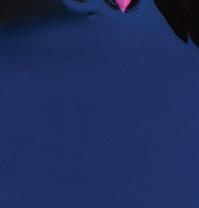


Train in mindfulness and education—with acclaimed teachers, certification tracks, and continuing education credits.
JULY 12-14

11th Annual Mindfulness & Education Conference


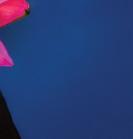
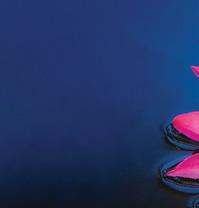







Bringing Mindfulness Practices & Social-Emotional Learning to Children Grades K-12

JULY 21-26
Mindfulness
In Education
Teacher Training
Rhinebeck, New York
Just 90 miles north of New York City eOmega.org/mindful-learning 800.944.1001
whenever I feel or hear myself starting to get rankled or impatient. I am increasingly able to see, know, and feel my triggers. I have become more aware of my language and tone when I am roaring for service. I have started to see how much pain I can cause, both to myself and to the person on the other end of the receiver, by taking the attitude that these disembodied voices are the enemy. At
the end of the day, it comes down to me and a person just like me trying to work things out, even if it doesn’t work out the way I want it to.
Whether you share my tendency to get rowdy and rude, or you simply find yourself anxiously awaiting release from customer service limbo, the just like me practice is a great starting point for turning these small interactions into a deeper practice. It reminds us that everybody, every being, is, for the most part, just like me. Everybody wants to be happy, just like me. Everybody wants to avoid suffering, just like me. Everybody has moments of loneliness, sadness, hurt, and difficulty, just like me. ●
Your Call Is Important to Us A Practice
As you listen to the please hold music, set the intention to be present, open, and curious. Bring awareness to your breathing. Feel your inbreath, feel your outbreath.
As you hold, take a moment to prepare:
The person I am about to connect with has a body that experiences joy and pain— just like me. This is a person who has hopes, dreams, and fears, just like me.
Once the call has begun, keep in mind:
The chances are pretty good that at some point, this person has known sadness, been disappointed, felt angry, hurt, abused, or confused. They have had to stand in lines, wait to be served, or
fight for fairness, just like me.
Remember:
This person might have a family they love and care for, just like me. They probably need love and kindness and someone willing to hear them and know that they are a person, just like me.

As the call wraps up, send wishes of kindness and support to this person who is just like you:
May you be happy.
May you be free from pain and suffering.
May you know that you are appreciated.
May we all feel peaceful and live with ease.
And PS: Thank you for helping me.
Yes, I’ll hold.

22 mindful April 2019 inner wisdom
Mind the Moment doesn’t just help corporations partner with the present moment. Since our very beginning, we’ve maintained a special relationship with health care providers, designing mindfulness training events for hospitals, physicians, nurses, and anyone else serving on the front lines of our health care system.
It’s our belief that bringing the power of mindfulness to our healers helps the whole system work better.
Our trainings provide health professionals and care-givers from all walks of life with mindfulnessbased techniques, which they can begin employing immediately to optimize patient interactions, increase resiliency, and embody their most deeply held values.
Our programs include:
• The latest research
• Practical techniques
• Continuing education units
• Access to cutting edge digital therapeutics
• Follow-up materials

• Hosting at your site, or in our New England facilities


Ask us about all the things we can accomplish together.
mindthemoment@harvardpilgrim.org • www.harvardpilgrim.org/mindfulness
The Mind the Moment program was developed and is offered by Harvard Pilgrim Health Care, Inc.
US IN PARTNERING WITH THE PRESENT MOMENT ON SOCIAL MEDIA
@mind_the_moment soundcloud.com/mindthemoment youtube.com/mindthemoment
JOIN
facebook.com/mindthemoment
Hippocrates said, “Wherever the art of medicine is loved, there is also a love of humanity.”
But in the process of helping humanity, our healers might leave themselves out of the equation.
Blood, Sweat, & Fears
Taryn Toomey, creator of The Class, wants to work out her issues. She wants to work out yours, too.
By Jennifer Wolff • Photograph by Michael Sofronski
“TUNE IN TO YOURSELF,” says Taryn
Toomey, the latest étoile du jour to light up the fitness world, addressing a women’s retreat in upstate New York last summer. “Know there’s a part of you that really wants the suffering and part of you that really wants the awakening.
“Know who’s running the show.”
Therein lies the essence of the Taryn Toomey phenomenon—suffering and awakening, hurting and healing. Toomey is the birthmother of The Class, a body-depleting, mind-bending workout that defies both definition and category. Physically demanding and emotionally exhausting, it is, to its throngs of acolytes who sweat regularly in her signature TriBeCa gym, spiritually and psychically cathartic.
EDITOR’S NOTE
Mindfulness is a fast growing field.
As new interpretations of mindfulness appear, Mindful will help explore those with you.

The hallmark of The Class is a series of repetitive motions devoid of rep count; there is no telling when the torture will end, an approach that plunges you entirely into the moment. Meshing high-intensity calisthenics with impassioned, confessional, almost feral exhortations, Toomey doesn’t simply want you to feel the burn—she wants you to experience it as an existential crisis.
“There’s a very specific way we train our teachers, of how we open the room,” says Toomey. “There’s an arc of the class, it’s how we build trust. There’s the physical, the emotional, the energetic. Then there is the spiritual. And we let you into that door through the body.”
The Class didn’t so much start one day as it evolved. From doing sports as a teenager, to practicing yoga, to running, Toomey says it was marinating within her for a long time.
“Things were getting activated in me,” she says. She started doing her impassioned, improvisational workouts with a friend in the gym in the basement of the building where she used to live. Other friends joined, and then this one told that one, and eventually Toomey took her show to the Dance Factory. Then came men and women from around Manhattan who had heard about this thing, this fitness class that wasn’t just about strength or cardio, but also about spirit and soul—not in that bullshit way that some classes try to invoke your animal spirit, but in a very real way that holds your hand as you step into your own darkness, and guides you toward the light, also your own. It’s a thing, a class, a workout, a mindfuck so powerful and popular, that Taryn Toomey has opened three outposts, in LA, Vancouver, and the Hamptons; hosts a monthly “spiritual residency” in Miami; and offers multiday “Retreatments” to places like Martha’s Vineyard and the Dominican Republic. →
24 mindful April 2019 LIVING | Q&A
The hallmark of The Class is a series of repetitive motions devoid of rep count; there is no telling when the torture will end, an approach that plunges you entirely into the moment.

April 2019 mindful 25
Taryn Toomey pushes the envelope in The Class.
Toomey has also collaborated with Lululemon on a clothing line, has recently started offering specialized classes at Equinox and Pure Yoga, and has put her name on a palette of muted pastel nail polish and bath salts. She designs her own high-end line of crystal gemstone jewelry, and even sells hats and capes that mimic her signature look. Indeed, what ignited as her own drive to exercise more mindfully—that is, to move her body in a way that freed her mind so as to open her heart—is erupting into a kind of empire of Toomey-inspired everything.
Following Toomey on social media is so profound it could turn your day around, maybe your life. “To those who inspired it but will never read it,” she posts as encouragement to journal. In another she writes, “One of the most expensive things you could ever do is pay attention to the wrong people.”
And yet. There she is, on a motor boat on Lake Como. At the Savoy Hotel in London. Lounging in Marrakesh. She’s even getting a bikini wax! Clearly the Ralph Lauren account exec turned spiritual crusader likes nice stuff, and who doesn’t? But as she crosses that border from creator into celebrity, is her ever-increasing price tag ($5,000-a-week “Retreatments,” travel not included) putting this work out of reach?
“The intention is that it’s basic. There is no choreography. You close your eyes and go. It’s actually a form of self-study. And when stuff comes up, what do you do? You breathe. You practice your ability to tolerate feeling and you stay right there with yourself.”
Jennifer Wolff : In my first class you chanted about the birth experience, among other things. In fact, you didn’t seem to be teaching or leading a class as much as acting out the kind of cataclysmic epiphany many students come to The Class to experience. By the end you were on your knees pounding your fists into the floor, your hair stuck to your cheeks, your eyes somewhat crazed, and saying “Fuck this” and “Fuck that.” What was that?

Taryn Toomey: Sometimes I feel like I’m on the battlefield out there. I’m not just teaching. I say what comes through me. I’ve given birth twice, and I remember feeling, “I can’t do this anymore. This is so intense. When is this going to end?” And then boom, you start pushing and a baby comes out and you have a love that you never knew possible. I don’t often talk about the birth experience, but that’s where I was that day. So for me, the reason I can teach and do what
I do is because I’ve had a lot of shit go down and been in a lot of pain for a long time, and I’m teaching from the depths of a lot of things. People look at me and are like, “What is this girl doing?” I still do this with a very soft, humble, scared heart. I’m still trying to heal myself.
What do you think it is about The Class that is such a revelation for people?
I have a true belief that there is not one human better than another and I am there with everyone. The thing I always do first is gain the trust of the room. And I do that by letting people know that they don’t have to do any of it. I’ll say, “You can just stand and place your hands over your heart and breathe.” I give people permission not to do it, and then usually they are able to do it a bit more. It’s gaining trust of the psyche from one’s own self. If you tell someone they have to do some-
Taryn Toomey presents at the Glamour Celebrates 2017 Women Of the Year summit.
PHOTOGRAPH BY CRAIG BARRITT / GETTY IMAGES 26 mindful April 2019
thing, usually they will resist. That’s what I find in my own self. So there’s a buildup of movements slowly that’s attached to breath awareness. We don’t go in there and be like, “Everybody lose your shit!” There’s sound involved [the music volume gets higher as movement intensifies, then lower during breaks of stillness] so people can express themselves without feeling like they’re having some sort of panic attack. It’s one of the built-in safety nets, so at the end of a big exercise, like the burpees, you can express yourself and then land in stillness. The hands are on the body. You recover the heart. You feel the soles of your feet on the floor.
Your exercises are simple. No weights. No bands. Very old school, not unlike Jack LaLanne: jumping jacks, flapping arms, leg lifts. And those damned burpees. But you don’t count. We never know when it’s going to end.

The intention is that it’s basic. There is no choreography. You close your eyes and go. You watch your mind as opposed to your mind having to do something. It’s actually a form of self-study. And when stuff comes up, it’s probably a pretty good sign that you’re on the edge of something that is really transformative. So what do you do? You breathe. You notice that you’re in the throes of something. Instead of knowing when it’s over, you practice your ability to tolerate feeling, to tolerate intensity, and you stay right there with yourself.
Most articles about The Class describe screaming and crying. After three classes I heard some screaming and witnessed some tears, but it was nothing like what people are saying.
I know. One person cries and the media makes it like everyone is sobbing. Sure, sometimes people cry a bit. Sometimes it hits you. There are times when I’ve gone to my other teachers’ classes and they have broken me. It happens. But it can’t be like, “Cry! ” If people come expecting to cry, they’re not going to cry.
Have you seen any transformation in your regular students?
This question makes me very uncomfortable. It’s like every single thing in my body starts to flare up and I don’t want to share any of it. But, yeah, people have told me that it’s changed their whole life. Students have been able to create completely new career paths for themselves, or leave painful or toxic relationships, or grieve the loss of things from years ago. They’ve broken patterns within themselves. They’ve completely changed their physical body. But I don’t take ownership for any of it because they’re the ones that are doing it. I’m just kind of channeling their experience based on the energy they bring to the room. It’s like I’m here to be of service.
Do you ever discuss your own trauma? The trauma that led you to this place? To The Class? →
April 2019 mindful 27 Q&A
With people in my inner circle, behind the scenes. If you pull the hood back, it’s intense. But I’ve never fallen victim to it. And I say to the people who have hurt me, “Thank you.” Because they have required me to heal. I have a lot of stuff to process from the past. I think I’m clearing a lot of it, and I feel grateful that I am able to do what I am doing.
People refer to you as the new fitness guru, sometimes even a celebrity fitness guru. Is that what you are?
That makes me laugh, too. I have friends who call themselves gurus. With all due respect, I don’t consider myself one. And to call me a celebrity fitness guru, that just makes me want to roll over. It makes me crazy because those celebrities who work out, they’re that way because they work their faces off for their own bodies. Nobody is putting them on a machine and doing the work for them.
You now have four studios. How do you keep the intention of this work from becoming diluted?
It’s a fine balance. I’ve really had to have some hard conversations with myself, especially lately. One of the hard things would be if I lost my ability to teach and my community for some big dollar sign. That would be my worst nightmare.
Do you consider yourself a luxury brand?
I’d say yes. I love beautiful things. I’m also thrifty. I’ve done everything on a budget. And we’ve said no to a lot of pretty big deals because they didn’t feel right. We actually could have been a lot further in terms of opening studios and putting a lot more gas in the tank. We’re trying to be mindful as we move forward. So it’s like a double-edged sword: I like luxury, but I want this work to be accessible to all.
Even your Retreatments? Those are pretty expensive. The retreats evolved in the same way The Class happened, which was a mash-up of all the things that I loved and needed. →

28 mindful April 2019 Q&A
“We’re trying to be mindful as we move forward. I like luxury, but I want this work to be accessible to all.”
If It Doesn’t Kill You, Does It Make You Stronger?
Our writer throws herself into Taryn Toomey’s “The Class” and comes out the other side—intact.
TARYN TOOMEY steps in so close to my face I think she’s going to kiss me. And though generally not into women, I am fairly certain in that instant that I will kiss her back, until I realize that this is how she greets people, up in their grill, under their skin.
“Does anything hurt?” she asks after not kissing me.
“Yes,” I tell her. “Everything.”
“Perfect,” she replies. “We’ll take care of that.”
I don’t know what she means, or what she is—sort of beautiful, sort of plain, absolutely radiant, her blonde streaked hair tumbled just so atop her head, her skin aglow with the slightest brush of the expensive highlighter she sells in the gift shop outside of her Bridgehampton pop-up. To get to her, to The Class, I had to maneuver between fancy women in big sunglasses and expensive workout gear driving Mercedes and Range Rovers, fighting for a space in the crowded dirt lot. But once inside, lifted by the sweet smell of palo santo—and by the Chanel products in the bathroom—I find peace on the Toomey-insignia’d yoga mat that will define my space among some 40 others during the next hour of sweat and, so I am told, tears.
Toomey starts us off with Mumford & Sons’ “Si Tu Veux”—beatdriven, foreign, imploring—and we begin to move as she whisper-talks into her little mic. I can’t make out what she is saying, only that her voice is not coming into my head but through it. She urges me, all of us, from the inside, through a
round of jumping jacks that never seems to end until it does. Then we stand, hands over heart, until we begin again, this time with squats, and a song that seems to speak for Toomey, Avicii’s “Wake Me Up”:
Feeling my way through the darkness guided by a beating heart I can’t tell where the journey will end but I know where to start…
I feel weak, unable to keep up. It’s been a while since I set foot in a gym or onto a mat. My body creaks.
I am angry that it won’t move how I want it to, how I bend my waist into my squats, how my hands won’t clap above my head during the jacks. And don’t talk to me about the goddamned burpees, of which I’ve done, maybe, one.
“Stay in your body,” Toomey says. “Don’t let anyone fucking tell you how to live. How to be. Who you are.” She looks at me through the crowd, and I look down. Ashamed. It’s like she’s reading the script inside of my head. I. Can. Not. Do. This. I feel her stare, and look back up. She nods, as though telegraphing, Yes, you can. If you want to. You can.
As the frenzy of the class builds, Toomey riffs like a preacher on the precepts of pain, of time, of overcoming self-imposed limitations. Yet she doesn’t demand focus or discipline. She asks for something else entirely: surrender.
As the exercises grow more intense, so does the music get louder. The yelps and grunts that explode from the crowd lay down
a baseline rhythm for the room, a deep-throated mantra in which soon enough I lose myself, too. Because the more I move, the deeper Toomey’s raspy voice penetrates my brain, the looser my limbs become, the stronger. And then my revelation: I am frightened not of my weakness but of my strength. I’m frightened not of what my body can’t do, but by what I have never let it do: be powerful.
Meanwhile, Toomey begins to twist into her own unique contortions, as though gripped in an exorcism. Then, she comes down and brings us with her. We stand, hand to heart, feet to floor. “All you need is right under your hand,” she whispers. “It’s all you need. Not the cars or the clothes or the stuff.” I gaze toward her shop with the $800 gemstone pendants and the $100 beauty serums, and I wonder with all that’s being offered, for a price, is my heart truly enough?
By JENNIFER WOLFF
Toomey doesn’t demand focus or discipline. She asks for something else entirely: surrender.
INSIDE THE CLASS April 2019 mindful 29
I had not traveled much, but I wanted to. I wanted to be able to bring my kids. I like really good food. I like really good music. I like friends coming together. I like to move my body. I like to meditate. I like yoga in the afternoon. Why don’t I get a whole bunch of people together and do it? So it’s great because all of these things are now enmeshed. I have basically designed my life around the way I want to live. It wasn’t this big idea of “Let’s make it really luxury.” It was “I want to get out of the city in the summer and out of the cold in the winter.”
That said, behind the scenes, we’re working to layer in some additional retreats with other teachers that are more accessible, and price points that are lower. So we are going to, as we move forward, make sure that there are ways for this work to be accessible to all, because that’s the end goal.
Will we see Taryn Toomey for Target?
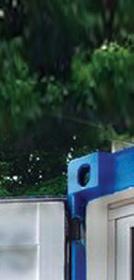
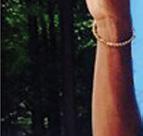
No, not necessarily. I’m not saying ‘pooh-pooh’ on Target, nor am I going to say no. But we’re moving slowly because of the questions of teachers and how to rescale


it. We’ll do a few more studios in the right markets. We’re considering some digital platforms.
Your class is so out there it’s hard to know if it’s complete magic or complete BS.





Yeah, I said something like that to someone recently. I said, “Sometimes I feel completely insane. I feel like I’m bodying right up against the edge of madness, and that’s where all of the genius lives.” She was like, “Yeah, you’re right.” It’s like what you just said. I was kind of laughing about it because that’s what I feel like sometimes. I feel like right when I’m like, “Am I going crazy?” That’s when... it’s a little bit of, that’s where the “magic” lives. ●
ABOUT THE AUTHOR

Jennifer Wolff is a journalist based in New York City, who focuses on health, well-being, and travel. She is the recipient of Planned Parenthood’s Maggie Award, the Resolve Hope Award, and numerous citations from the National Women’s Political Caucus and the Association of Heathcare Journalists.

30 mindful April 2019 Q&A
“Right when I’m like, ‘Am I going crazy?’...it’s a little bit of, that’s where the ‘magic’ lives.”

Picking Up the Pieces
What causes us to move on from traumatic experiences?

Psychologists are finding resilience is not always about bouncing back; sometimes we have to feel our whole world fall to pieces.
The Vietnam War veteran had enlisted when he was young, serving two combat tours and surviving multiple firefights. “To this day,” said psychologist Jack Tsai of the Yale School of Medicine, “his war memories are triggered by certain smells that remind him of Vietnam”: overgrown vegetation, the acrid stench
ABOUT THE AUTHOR
Sharon Begley is senior science writer with STAT, a national health and medicine publication. She is also author of Train Your Mind, Change Your Brain and most recently Can’t Just Stop: An Investigation of Compulsions (2017, Simon & Schuster).
of burning, or even sweat—like that which ran in rivulets down the faces of men fighting for their lives in the sweltering jungles—brought it all back. It was classic post-traumatic stress.
As Tsai was treating him (successfully) for PTSD, however, something unexpected emerged. The vet still described his Vietnam experiences as horrific, but he said the painful memories remind him of who he is. His experience typifies research psychologists’ new understanding of trauma: When people are least resilient—in the sense that they are knocked for a loop, do not bounce back quickly or at all,
and suffer emotionally for months, if not years—they can eventually emerge from trauma stronger, more appreciative of life, more sympathetic to the suffering of others, and with different (arguably more enlightened) values and priorities.
By no stretch of the imagination would the vet be called resilient in the sense that research psychologists use the term: an ability to go on with life, essentially unchanged mentally and emotionally, in the wake of profound adversity. To the contrary, environmental triggers returned the vet’s troubled mind to the horrors of →
By Sharon Begley
32 mindful April 2019
• Illustrations
brain science
FOR MANY, POST-TRAUMATIC GROWTH BRINGS CLOSER RELATIONSHIPS AND A STRONGER SENSE OF CONNECTION TO OTHER SUFFERERS.
by Edmon de Haro

land mines and ambushes and friends blown apart. At the same time, the vet’s military experience (and his triumph over PTSD) makes him feel that he can accomplish anything. “Nothing bothers him too much, because everything pales in comparison to Vietnam,” said Tsai.
This effect, post-traumatic growth , was so named in 1996 by psychologists Lawrence Calhoun and Richard Tedeschi of the University of North Carolina. It can take many forms, but all involve positive psychological changes: a greater sense of personal strength (“if I survived that, I can survive anything”), deeper spiritual awareness, greater appreciation of life , and recognition of previously unseen pathways and possibilities for one’s life . For many, post-traumatic growth brings closer relationships—as family and other loved ones are more cherished—and a stronger sense of connection to other sufferers.
Stronger Than Before
The concept that from great suffering can come great wisdom is both ancient and familiar. An oncologist friend of mine talks about patients who say cancer was one of the best things that ever happened to them, cutting through life’s usual trivia and making them value the truly important. President Jimmy Carter’s Chief of Staff, Hamilton Jordan (1944–2008), said his battle with cancer made him see that “the simple joys of life are everywhere and are boundless.”
After a car crash in which my childhood friend Joyce lost her right leg at age 20, her months-long recovery and rehab left her with hours upon empty hours to think. “Stuff that used to be a big deal, like

being popular, just isn’t anymore,” I remember her saying. “I care about making a difference [she became a schoolteacher], and I think I’m more empathetic. I feel that when someone is suffering I understand in my bones what she’s experiencing. Before, it was just, oh, poor her.” However, post-traumatic growth does not mean traumas are desirable, let alone that they should be downplayed when they befall others. As bestselling author Rabbi Harold Kushner said about the spiritual growth he experienced after the death of his 14-year-old son, “I would give up all of those gains in a second if I could have him back.”
Few lives are without suffering, crisis, and traumas, from extreme or rare ones, such as becoming a war refugee or being taken hostage, to common ones, such as bereavement, accidents, house fires, combat, or your own or a loved one’s serious or chronic illness. For years, psychology has assumed that the best inoculation against post-traumatic stress—as well as responses to trauma that fall well short of mental disorder—is resilience,
“POSTTRAUMATIC GROWTH MEANS YOU’VE BEEN BROKEN BUT YOU PUT YOURSELF BACK TOGETHER.”
brain science 34 mindful April 2019
JACK TSAI, PSYCHOLOGIST
the ability to pick up one’s life where it was before the trauma. Now that psychology has made post-traumatic growth a focus of research, what is emerging is a new understanding of the complicated relationship between trauma, resilience, PTSD, and post-traumatic growth.
Post-traumatic Growth vs. Resilience
Although the psychological concept of resilience dates back to the 1970s, scientists are still struggling to understand its origins. Some studies find it’s fostered in childhood by a strong relationship with a parent or other adult, and the belief that your fate is in your own hands (a sense of agency). But the opposite belief, that “God is in control and everything happens for a reason,” may contribute to resilience, too, said UNC’s Calhoun. A 2016 review of people who survived atrocities and war in nine countries from South Sudan and Uganda to Bosnia and Burundi found that resilience varied by culture. Strong emotional connections to others fostered resilience among survivors in some societies but not others, and a sense of agency actually backfired among some: If you believe your fate is in your hands and then see your family cut down by a sniper in Sarajevo, you feel not only grief but also crushing guilt.
In the absence of resilience, post-traumatic growth—a very different response to trauma—might emerge instead. “Post-traumatic growth means you’ve been broken— but you put yourself back together” in a stronger, more meaningful way, Tsai said. This may come as a surprise to those who think of resilience as the ability to learn, change, and gain strength in the face of adversity.
Among research psychologists, however, resilience is about bouncing back with relative ease to where you were before, not necessarily bouncing forward to a stronger place. By this understanding, without the breaking, there cannot be putting back together, so people with strong coping capacities will be less challenged by trauma and therefore less likely to experience post-traumatic growth.
For post-traumatic growth to occur, the breaking need not be so extreme as to constitute PTSD, as was the case for the Vietnam War vet. Tsai and his colleagues found that among the 1,057 US military veterans they studied, the average number of lifetime traumas (such as bereavement, natural disaster, illness, and accidents, as well as military traumas) was 5.7. Only 1 in 10 had PTSD, yet 59% of the vets had experienced post-traumatic growth. And the strongest predictor of whether someone would avoid PTSD after additional trauma was whether they had experienced post-traumatic growth after an earlier one, Tsai and his colleagues reported in the Journal of Affective Disorders. It was the first study to examine whether previous post-traumatic growth can protect against PTSD if trauma strikes again. The findings suggest post-traumatic growth might in fact boost resilience.
Post-traumatic growth—unlike resilience—is not a return to baseline. It is the product of reassembling your “general set of beliefs about the world/universe and your place in it,” said Calhoun: You question the benevolence, predictability, and controllability of the world, your sense of self, the path you expected life to follow. From the shards of previous beliefs, you create wholly new worldviews, and can perhaps emerge a stronger person than you were before. ●
WHAT IS “Trauma” ?
Among psychiatrists, what constitutes “trauma” is controversial. Some define trauma based on the nature of the event: Psychiatry’s diagnostic manual, for instance, says a traumatic experience must be outside the range of what humans normally encounter. Others define trauma based on how people respond to an experience: Intense fear, helplessness, horror, or distress would be symptoms of trauma.
A circular definition —“trauma is something that leaves you traumatized”—is obviously not ideal. Nor is “outside the range of normal experience” a reliable measure: Tragically, many experiences that once were outside that range no longer are, such as natural disasters, mass shootings, or wartime horrors.
Scholars are therefore trying to do better. An emerging definition holds that trauma challenges a person’s “assumptive world”: her belief in how people behave, how the world works, and how her life would unfold. By this understanding, trauma needn’t threaten life or health, nor cause post-traumatic stress disorder. But it must make you question your bedrock assumptions, such as that the world is fair, that terrible things do not befall good people, that there are limits to humans’ capacity for inhumanity, that things will always work out, or that the old die before the young. By that definition, few of us make it through this life without experiencing trauma.
DEFINITION
April 2019 mindful 35
Coming Full Circle
Dena Simmons shares her mindful journey from the streets of the Bronx to the ivory towers of Yale and back.
 By Victoria Dawson • Photographs by Stephanie Diani
By Victoria Dawson • Photographs by Stephanie Diani
Dena Simmons, EdD, grew up in a one-bedroom apartment in the Bronx with her three sisters and her mother, an immigrant from Antigua who came to the US with $25 in her pocket. Simmons’ mother was fiercely dedicated to giving her daughters more opportunities than she’d had herself. So, after the rent, the family’s financial priority was tuition to the local parochial school. No surprise, then, that education not only took Simmons out of the Bronx but also brought her back, as a classroom teacher. Today, Simmons is the assistant director of the Yale Center for Emotional Intelligence, where she oversees training, curriculum development, and education initiatives. The Center’s mission—“to use the power of emotions to create a healthier, and more equitable, productive, and compassionate society”—keeps Simmons closely connected to her mother’s abiding belief in the power of education. She is also author of the forthcoming White Rules for Black People (St. Martin’s Press, 2021).
Tell me about the Bronx, where you grew up.
The Bronx is a complicated piece of art. When people think of the Bronx, they think of the single narrative of catastrophe and hardship and danger and violence. But that’s not all. The Bronx is struggling, yes. The Bronx is lacking in resources, yes. The Bronx is a victim of bad policies, yes. The Bronx is also beautiful. The Bronx is community. The Bronx is family. It’s true that my neighborhood was unsafe—I knew what the drug dealers were doing, but I also knew that they were looking out for my sisters and me. There was a fullness in their humanity. The fight
I have in me comes from fighting the ugly as a kid. I had to learn to thrive in the most unfortunate circumstances. The Bronx is where I am from—the beauty and the ugliness raised me. I can live anywhere, because I have lived in the Bronx.
How does a word like “mindful” fit into that setting?
When I was a child, being mindful was a matter of safety. I went to sleep, often, to the sound of gunshots. So, first, being mindful— mindful of my body and its safety—was what kept me alive. Mindfulness was not something that I got to do by sitting in a quiet space and meditating. →
“PART OF BEING MINDFUL IS UNDERSTANDING THE POWER AND PRIVILEGE I HAVE ACQUIRED ON MY JOURNEY—AND REMEMBERING WHERE I STARTED.”
36 mindful April 2019 walk the talk
Dena Simmons Assistant Director, Yale Center for Emotional Intelligence NEW YORK, NY

What about when you left the Bronx?
When I went to boarding school in Connecticut, it was the first time I had ever been in a predominately white setting. I was trying to get a good education, wondering about my emotional safety. As I acquired more social capital, more privilege, I moved further away from people who looked like me. As a Black person, every time I walked into a room, there often were very few people who looked like me. In those spaces, I’ve had to be mindful, to know whether it was safe to be Black.



How has your understanding of mindfulness changed?
I’m still Black, still a woman, still in a mostly white setting. But now part of being mindful is understanding the power and privilege I have acquired on my journey—and remembering where I started, where I have come from.
Can you give me an example?
I commute from Harlem, where I live, to New Haven, where I work. Both train stations are located in neighborhoods similar to where I grew up. When I get off the train, there are people who are struggling with drug addiction. I see people ignore them. I want to recognize and appreciate their full humanity. I make eye contact and say hello. I constantly check myself when I’m starting to be biased or judgmental. I want to see the beauty—the art—in what is around me.
You have a twin sister who was diagnosed with a chronic illness when you were much younger. Yes, that’s another piece of mindfulness for me: understanding that every single day I have the privilege of waking up without pain. My sister does not. I pray every day, asking for her not to suffer. Sometimes the privilege we forget about is our ability to not feel pain in our body.
Do you have a formal practice?
At night, I do a five- toseven-minute breathing and loving-kindness exercise. It’s my grounding. Wishing well to myself and to others, asking what I can do to be better, thinking about people who did something that I appreciate—it’s like a prayer. And I actively let go of any negative energy— daily traumas and slights, any harm that people have done to me.
What is your abiding passion?
To make the world a better place. Wherever I am, whatever work I do, I will find a way to make that happen. My mother sacrificed so much for my sisters and me. It would be disrespectful for me not to make that same effort. ●
38 mindful April 2019 walk the talk
“BEING
MINDFUL—MINDFUL OF MY BODY AND ITS SAFETY—WAS WHAT KEPT ME ALIVE. MINDFULNESS WAS NOT SOMETHING THAT I GOT TO DO BY SITTING IN A QUIET SPACE AND MEDITATING.”

to the wild wake up
Wilderness expert and renowned mindfulness teacher Mark Coleman shares how he is learning to hold the intense beauty of nature—and devastation of climate change—in perspective.

PHOTOGRAPH BY AARON KEIGHER / NIS / MINDEN PICTURES /GETTY IMAGES
40 mindful April 2019 nature


42 mindful April 2019
As I start out on one my favorite trails, it takes a while for my senses to open up, but soon I feel embraced into a luminous world, welcomed by innumerable shades of green, tall grasses shimmering, trees swaying in the breeze, and shafts of sunlight peering through the thick canopy. Below me, a family of quail dart in and out of the bushes.
As I crest the hill, I feel the invigoration of the cool wind, blown in fresh from the Pacific. I inhale deeply and smell the bite of the salty ocean air, which feels like a homecoming, familiar and welcoming. It seems to blow the dullness from my mind, and I sense how nature invites us to connect and feel our way into a larger sense of self.
We tend to think of consciousness as skin bound, brain tethered. However, in nature we can sense something vaster—and that something larger senses us. And from here our perception and understanding transforms: We start to think from this bigger perspective.
Mindful Awareness in Nature
For over 15 years, I have led Awake in the Wild retreats in places such as the islands in the Sea of Cortez in Baja, Mexico, the Sierra Nevada mountains in California, and the red rock canyons in Arizona. Participants immerse themselves in the beauty of wilderness for a week of silence and meditation and become transformed by the process. Through the portal of mindful awareness, they are developing an intimate connection with the natural world that is both sublime and insightful. They come to sense how embedded they are within the fabric of life and its ecosystems.
I teach my nature-based meditation work, in part, because we have lost the art and ability to know how to be in nature. We are mostly busy doing nature. We are conquering the mountains, beating our best time on a run, chatting with friends on a walk, listening to music on headphones, or simply spaced out, daydreaming or lost in thought.
ABOUT THE AUTHOR
Mark Coleman is a mindfulness meditation teacher, nature guide, author of Make Peace with Your Mind and Awake in the Wild and founder of the Mindfulness Institute. An “inner and outer explorer,” Mark likes nothing more than sharing his passion for integrating nature and meditation and has led wilderness meditation retreats from Alaska to Peru. He lives in Marin County.
Although I believe any time in the outdoors is time well spent, what we do with our mind while we are outside is significant. With mindfulness training, we learn that in any moment we can shift attention from the stressinducing thought realms—the brain’s default mode network—into the visceral present. We can attune to our senses and see how they support present-moment awareness. We realize the body and its sensory nature are always present. By practicing outside, we discover how nature constantly allures our awareness to its beauty, →

It has been a long day at my desk, staring at a computer; my brain cells feel wrung dry with too much cogitation. Late afternoon, the fog has lifted on the hilltops above my house and I decide to venture out on a hike to clear my head and connect with what I love most: this pulsing earth.
PHOTOGRAPHS BY WIN-INITIATIVE / GETTY IMAGES AND COURTESY OF MARK COLEMAN
April 2019 mindful 43 nature

PHOTOGRAPH
44 mindful April 2019 nature
BY TOBIAS FRIEDRICH / GETTY IMAGES
complexity, diversity, and simple miracles. Or we can discover what Wendell Berry notes in his poem “The Peace of Wild Things” as he steps outdoors: “For a time I rest in the grace of the world, and am free.”
Nature’s Invitation
Nature also provides innumerable counterpoints to stress. For our cramped, pressured, cubicle lives, we can feel a magnificent sense of space as we behold the boundlessness of the night sky or the vastness of the ocean. For our senses—dulled by screens and monotone offices—we can drink in a thousand colors of the pebbles and sands at the beach or shades of green as we walk in the woods.
For the pervasive anxiety and stress that runs through our nervous system, we can access the tranquility of trees, streams, and wildflower meadows. We can attune to the gentle deer who embody a grace and dignity as they move through a landscape. For our heart made heavy by sadness and grief, we can be touched and comforted by the simple joys of bluebells blooming in woodlands, the fleeting hummingbird as it floats by, or the billowing clouds lit up at sunset.
Nature’s teaching also provides a perspective that we all too easily forget. As we watch scarlet maple leaves drop in the fall, it reminds us of the importance of letting go, of release. Walking in a woodland in the dead of winter, we behold the natural rhythms of dormancy, and remember there are seasons of flourishing and times to rest and rejuvenate. Seeing fields of once-golden blooms of sunflowers now withering in autumn, we remember that beauty and joy also have their seasons, their ebb and flow.
Nature always invites our attention and offers so much to our depleted hearts and minds. The question now is: Will we accept the invitation? What’s at stake if we don’t is not just our personal well-being. Our collective health—and perhaps even the survival of our entire species— seems to hang in the balance.

Feeling the Reality of Change
As I continue my hike along the crest of the hill, I suddenly realize the view is not the crystal clarity I have come to expect. There is a haze in the valleys below, blurring boundaries and obscuring the horizon. I begin to smell an acrid smoke that strangely blows in from the ocean. The smoke comes from the raging fires further north, burning in the Pacific Northwest and British Columbia. Although originating more than a thousand miles away, these plumes, carried by Pacific thermals, blow into California. It is the all-too-constant reminder that not all is well in the world, however beautiful the nature that surrounds me.
Today, because of climate crisis and changing ecology, the sense of finding nature as source of nourishment is changing. We now live in an era where the impacts of global warming—unprecedented forest fires, species extinction, coral reef deaths—are impossible to ignore. Our very experience of nature is tinged, if not marred, by these looming realities.
I have hiked in three mountain ranges in 2018: in the Rockies, the Sierra Nevada, and the Alps. In each place I walked, visibility was affected by a smoky haze from nearby or distant forest fires. In the same year, California witnessed two utterly tragic fires. One, the Camp Fire, incinerated the entire town of Paradise, destroying up to 18,000 homes, forcing more than 52,000 people into some phase of homelessness. Simultaneously, the Woolsey fire, near Malibu, ravaged hillsides and homes alike. The Camp Fire spewed smoke that stretched for hundreds of miles up and down California, blanketing entire cities with toxic smoke. It was described as the hottest and fastest moving fire in history. The intensity fueled by the drought conditions were a direct result of climate change.
Similarly, friends who like to snorkel and dive lament the diminishing coral reefs. Alpine climbers witness the high mountain glaciers →
Nature always invites our attention and offers so much to our depleted hearts and minds.
April 2019 mindful 45 nature
The question now is: Will we accept the invitation?
disappearing year after year. Oceans that were once teeming with fish are now depleted. The remaining fish drift in gigantic garbage patches, some as large as the state of Texas.
Our grief and pain about such things is harder to push aside. The results of the climate crisis are mounting, becoming an enervating presence where once we drew pure pleasure and deep replenishment. Instead of relishing the majestic trees, abundant wildflowers, or breathtaking views, we confront drought conditions, flooding, or the smoky haze of distant forest fires. Our heart may feel heavy and weary or helpless at the scope of the problem.
The Australian eco-psychologist Glenn Albrecht coined a new term for this: solastalgia. It is a part of an emerging lexicon in the mental health field that endeavors to address the distress and anxiety that occurs in relation to the ecological crisis. Solastalgia, composed of two Greek words, solacium (comfort) and algia (pain), refers to the distress caused by environmental damage and speaks to the grief, sadness, and despair that arises in response to the current environmental devastation. Instead of joy there is a hopelessness, a knowing that what is loved is now under threat.
People feel solastalgia in response to mountaintop mining from the Blue Ridge Mountains to Western Australia. It is felt when one sees the vast forests in the West scorched by fires. It is stirred when there are mass beachings of dolphins or whales or when blooming red tides in Florida stifle marine life. Sailors feel it when drifting past islands of plastic in the Pacific. Farmers know it in their bones when droughts crush their wheat harvests.
When I recently came across this term, it articulated something I’ve felt for some time. It speaks to my changing experience in nature. In the past, nature had always been an unending source of nourishment, joy, wonder, and love. Now it is often tinged with sadness, grief, or loss at what is happening to species, habitat, oceans, and rivers. It is now impossible to ignore. What does this mean for countless people who have
gone to the woods for refuge and resilience? What are the dire consequences for vulnerable peoples and species the world over?
Of course, I am also aware this grief is not new. Indigenous cultures and First Nations peoples have felt it for centuries. They have and continue to witness ecological devastation of their homelands through land confiscation, drilling, mining, deforestation, and the monocrops of agribusiness. They perhaps are more vulnerable to the consequences of climate change, whether that be declining fish stocks, melting ice in the Arctic, or changing migration patterns. Our current tears are part of a river of tears that has been flowing for a long time.
Practice with Paradox
For me, as for any nature-loving meditator, this presents a challenging dilemma. How do we continue to open our hearts to the beauty of the natural world when doing so means we also feel the deep pain of losing what we love?
As I sit by the ocean, I can revel in the silky surface of the water, the light catching the crest of waves, and be mesmerized by its restless beauty and vast power. Yet I also can’t help thinking of the creatures that lie within it: the diminishing shoals of tuna and dwindling populations of porpoises.
Whenever my heart feels torn in this way, I remember that where we habitually place our heart and mind becomes our natural inclination. What we focus on determines to some degree our sense of well-being. We can’t ignore the ecological crisis. We are here because society has refused to look squarely at this complex problem. However, does it serve the greater good to dwell only on the catalog of data about climate change? Such single-pointed focus can lead to despair, hopelessness, and worse.
On my walk I can dwell on the smoke, the acrid smell, the diminished visibility, and the destruction those fires bring. Or I can shift my attention to what is not burning up. To the →
PHOTOGRAPH BY KEVIN HORGAN / GETTY IMAGES
46 mindful April 2019 nature
Solastalgia refers to the distress caused by environmental damage and speaks to the grief, sadness, and despair that arises in response to the devastation.
Support What You Love
5 Ways You Can Help Counter Climate Change
Switch to a plant-based diet, cut down on dairy, and buy local
Raising livestock accounts for around 18% of greenhouse gases emitted globally each year. If the grain fed to livestock were fed to people, we could feed 800 million! Support your farmers and buy local— American food travels an average of 1,500 to 2,500 miles from farm to table.
Rethink transportation
Air travel contributes up to 9% of human activity on climate change. Take ground transportation as much as possible. Bike, walk, or take public transit. If you need to drive, upgrade to a fuel-efficient car, a hybrid, or even better, an electric car—and carpool.
Green your home
If every US home replaced a single incandescent lightbulb with an energy-efficient lightbulb, it would reduce CO2 emissions by the same amount as removing one million cars from the road! Install solar panels on your house. Buy highefficiency appliances. Insulate your home properly. Wash clothes in cool water and hang-dry them, old school.
Think smaller
Perhaps the most significant factor in our individual contribution to climate change is the number of children we have. Consider having smaller families.
Vote Elect officials locally and nationally who support green, sustainable policies to counter climate change.

The question I hear from many people is: How do we hold the pain of the earth at this time? My answer is simply to grieve. To let yourself feel the depth of the pain and let the tears flow.

PHOTOGRAPH BY PAUL SOUDERS
GETTY IMAGES 48 mindful April 2019
/
Indian paintbrush flowers at my feet on my walk, or to the wave of pelicans who fly in exquisite formation along the coast. I can take in the elegant trees that reach their limbs skyward and the beautiful eucalyptus bark that peels like skin, while their leaves cast a dreamy, shadowy light upon the lush undergrowth.
Mindfulness teachings point us to meet the present moment as it is: We behold both the beauty of nature and the devastation that is occurring. We see the folly of overly romanticizing the past or drowning in doomsday scenarios of what’s to come. We hold predictions about the future lightly, however certain they’ll appear, as we can never know for sure what may unfold.

In learning the power of inclining our mind, we can also turn our attention to the tremendous number of constructive solutions that millions of people around the planet are working on. Organizations around the world are figuring out how to remove plastics from the ocean, draw carbon from the air, restore habitat for tigers in Nepal, and clean up the Ganges river. The list of businesses, municipalities, and nonprofits crafting creative solutions to the climate crisis is vast and increases every day.
These times require our mindfulness practice to hold a wide view. It asks that we hold the harsh reality of the eco-crisis, the beauty of what is still here and thriving, and simultaneously the uprising of ordinary people working all over the planet to steward, protect, and preserve the earth in sustainable ways. I have walked through scorched forests. I can look at the blackened trunks and feel a tender grief. And I can also focus on the emerald green shoots that rise out of the ashes. Both are true. Both demand our attention.
To be awake today is to learn how to hold paradox in your mind and to dwell in ambiguity. Indeed, the question I hear from many people is: How do we hold the pain of the earth at this time? My answer is simply to grieve. To let yourself feel the depth of the pain and let the tears flow. Allowing grief to move through allows movement and a responsiveness to rise out of those tear-stained ashes. It helps melt the frozen numbness that thwarts effective action.
We Protect What We Love
On my wilderness courses, I tell attendees that the basis for the Awake in the Wild meditation practice is summarized in the phrase: “We protect what we love.” When we bring meditative awareness to something in nature, like a baby sparrow in her nest or the first snowdrop flowers emerging from a long winter, we can discover our heart blooms with tenderness. It is sometimes what restores our humanness.
It is precisely this love, this open-hearted connection that is the basis for personal resilience and sustainability on a macro level. When we see how this beautiful planet, its creatures, and ecosystems are threatened, our heart galvanizes an active and sometimes fierce response, in the same way a mother bear will fiercely protect her cubs against threats. It is love that helps summon strength and passion to steward the earth. However, to feel that love necessitates we have intimate contact with the natural world. And it requires that we listen to the pulse of our own heart.
This reminds me of the story of John Seed, the Australian author and activist. He received a call some years ago from a friend inviting him to join protests in a section of rainforest near his house in New South Wales. A timber company was trying to clear-cut old-growth forest, and people came to stop the loggers until a court order could take effect.
Not being a natural protester, John found himself at the front of the demonstration facing huge bulldozers and logging trucks. What happened next surprised him and radically changed his life. Rather than thinking it was he, John, who was protesting, he realized it was the rainforest moving through him that was protesting the logging. The forest was acting through a larger ecosystem—via John—to protect itself. Such moments of insight shatter our illusion of separation and individualism.
My hope is that perhaps as we spend more time in the wild, attuned to the beautiful yet fragile natural world, we will, like John, be moved and feel the earth moving through us as part of a healthy ecosystem, to protect itself. And that, perhaps, we will learn to explore the paradox and ambiguity, to feel both the beauty and fragility, our deep nourishment and devastating losses—as we grow an inner resilience and outer sustainability to support what we love. ●
April 2019 mindful 49 nature
The latest research in neuroscience is revealing how mindfulness can help rewire—and calm—ancient brain networks tied to stress, anxiety, and overwhelm.
 By Barbara Paulsen
By Barbara Paulsen
PHOTOGRAPH
BY TIM FLACH / GETTY IMAGES
neuroscience 50 mindful April 2019

Only nothing is wrong. I know that. I’ve experienced these bouts of dread for as long as I can remember. It’s familiar, which does not help me hate it any less.
Explaining chronic anxiety to someone who doesn’t experience it is like trying to describe a color they’ve never seen. I have friends who are surprised I suffer from anxiety. After a lifetime of learning to compensate, to push myself beyond my six-year-old fear of joining the Girl Scouts, I do not come across as a nervous Nellie. I am outgoing, talkative, adventurous. Last spring, I planned a Class IV whitewater rafting trip with my husband for three days in the summer.
I started dreading it the minute after I booked it. I go for long periods when anxiety leaves me alone, and I forget the tightness of its grip. But when it comes back, triggered by stress or worry about an upcoming challenge, it sticks around, greeting me every morning like some noxious troll who won’t shut up. Something’s wrong, it insists, or more accurately, something is about to go terribly wrong. I know this thought is irrational, but that doesn’t stop the spiral of anxiety that ensues. Nerves twitch under my skin. I scroll my list of things to do and feel uneasy, even about the tasks I’m (supposedly) look-
ing forward to. When days begin like this, happiness is not on my agenda.
Too Much of a Good Thing
All animals react when confronted with danger, and that’s a good thing. The so-called fight-or-flight response, also known as the stress response, helps animals either move away from a threat or fend it off. Anxiety—the ability to anticipate danger—is even more of a good thing. Anxious humans who avoided areas rife with predators or saved food in anticipation of crop failure had a better chance of staying alive to pass on their genes. And make no mistake, that’s all evolution cares about. It doesn’t care that we exquisitely anxious humans might survive but be miserable a lot of the time, massaging our worry beads down to nubs. Let’s face it, in the modern world, with far fewer real threats in our environment, many of us are suffering from too much of a good thing.
Too much anxiety robs you of your capacity for joy. When everyday worry becomes chronic, it can flip over into one of several flavors of debilitating emotional disorders. Some sufferers develop specific
It’s there when I wake up. Something’s wrong. I haven’t opened my eyes yet. A minute ago I was sleeping. But now I’m awake and it’s there, lurking: Something’s wrong. My breathing tightens. I stretch my legs beneath the sheets. I feel my heart beating. The sense of creeping fear is diffuse, elusive, hard to pin down. It’s like catching sight of something from the corner of my eye. Something’s wrong.
TO UNDERSTAND ANXIETY, YOU’VE GOT TO START WITH FEAR, BECAUSE ANXIETY IS LIKE FEAR RUN AMOK.
PHOTOGRAPH BY HANS NELEMAN / GETTY IMAGES 52 mindful April 2019 neuroscience
phobias—agoraphobia, claustrophobia, social anxiety. Others, like me, suffer from generalized anxiety disorder, a free-floating emotional malady. The National Institute of Mental Health estimates that one in five Americans have had some kind of anxiety disorder in the past year. In turn, anxiety can lead to sleep disturbances, panic attacks, hypochondria, depression. With so much misery at stake, it’s a relief to learn that lots of smart people have figured out how to ease anxiety. Whether you suffer from occasional worry or have a full-blown anxiety disorder, it’s possible to become fully engaged in life again. In the last three decades, scientists have decoded the spiral of reactions that, over time, build an anxious brain. Turns out, I’ve wired my own brain to be anxious. The good news is I’m learning to rewire it—and you can, too. The more we know about how anxiety actually works, the better we get at beating back the troll. Or at least making it behave.
Nothing to Fear But Fear Itself
To understand anxiety, you’ve got to start with fear, because anxiety is like fear run amok. Neuroscientists now know there are two distinct pathways in the brain that trigger the →
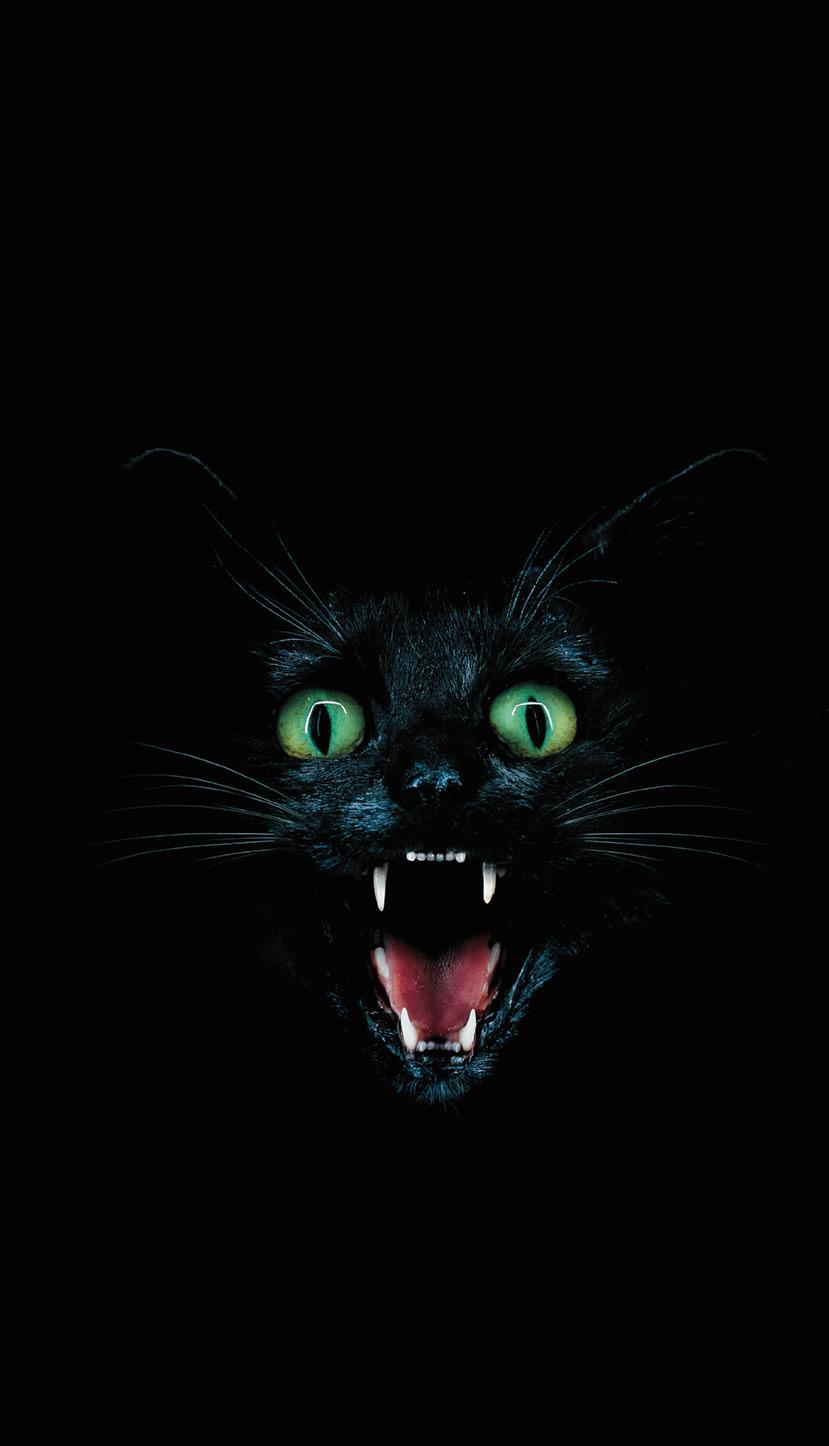
April 2019 mindful 53 neuroscience
fight-or-flight response. Here’s the most direct one: You encounter something in your environment—a man running toward you with a knife, a car veering into your lane on the highway— and a part of your brain called the thalamus sends visual information directly to an almond-shaped structure called the amygdala. That’s the control center for the fight-or-flight response. When the amygdala detects a threat, it triggers a surge of adrenaline and an increase in blood pressure, heart rate, and muscle tension—to prepare you to act. A few weeks ago, as I rode my bike home, I suddenly braked, turned my handles sharply to the left, and barely avoided being hit by a car that had run a stop sign. I never saw it coming. But my amygdala did, and it may have saved my life.
Here’s the modern glitch in that evolutionarily brilliant response: “We don’t go into fight or flight just when we’re being chased by a bear,” says Adrienne Taren, a neuroscientist and emergency-room physician at the University of Oklahoma. “We’re getting it every time our email pings or we’re sitting in traffic. Our amygdala is just going and going and going.” That constant barrage of low-level alarm is what we call stress.
So where does anxiety come in? Because we’re such imaginative creatures, we can get stressed out by simply thinking about

54 mindful April 2019 neuroscience
something that may go wrong. The part of the brain that worries about a future event we’re anticipating is the prefrontal cortex, and that’s where the second pathway to anxiety starts—the one that creates that flurry of anxious thoughts you can’t seem to control. Worried thoughts in the cortex trigger a stress response in the amygdala, which explains why we can freak out about things that aren’t even happening. “I think of the amygdala as sitting there watching cortex television,” says Catherine Pittman, a clinical psychologist and coauthor of Rewire Your Anxious Brain. “You can be on your back porch, looking at the beautiful trees, but you’re thinking, ‘How am I going to pay my mortgage with these medical bills? They’re going to take my house away!’ Your anxiety spikes even though nothing around you is dangerous.”
It’s important to realize that the cortex can’t create anxiety on its own. It can

only activate the stress response when it gets the amygdala involved. The amygdala, on the other hand, can bypass the cortex, detect threats in the environment, and react, quickly. When I swerved to avoid being hit by that car, my amygdala took over while my cortex was still figuring out what was happening. Similarly, when a veteran feels anxious at what sounds like gunfire, it’s because his amygdala has gone into overdrive. The amygdala is constantly sweeping the scene, comparing our current experiences with associations learned long ago and some that are probably hard-wired. When it finds a match, it compels us to react, even if the current situation really isn’t all that threatening.
The cortex is like a parent who intervenes to prevent a child from acting on his or her impulses. It acts as a check for when the amygdala overreacts, recognizing, for instance, that what sounded like gunfire was actually a car backfiring and promptly tamping down the anxiety. Sometimes, though, the amygdala’s response is so overpowering that it drowns out the voice of the cortex. That’s anxiety in overdrive.
The neuroscientist whose work led to the realization that anxiety arises from two distinct neural pathways is Joseph LeDoux, the director of the Emotional Brain Institute at New York
University. His discovery of a direct neural pathway to the amygdala overturned the conventional wisdom that the cortex played the starring role in creating anxiety and instead placed the amygdala at center stage. This revolutionary development has enormous implications for why some anxiety treatments work better than others— and for why mindfulness approaches are now getting so much attention.
Getting to the Amygdala of the Problem
In the 1960s, people who suffered from anxiety would have been advised, taking a cue from Freud, that they needed to uncover the unconscious forces driving their fears. By the ’70s a more pragmatic approach had taken hold: Learn to change the thoughts and behaviors that lead to anxiety. Cognitive therapy has proven successful in helping people interrogate the negative thoughts underpinning their worries: Are people really judging me so harshly when I give a presentation? And what’s the worst that can happen if they are? Patients learn to question whether their thoughts are realistic or if they’re catastrophizing based on scant evidence. →
BECAUSE WE’RE SUCH IMAGINATIVE CREATURES, WE CAN GET STRESSED OUT BY SIMPLY THINKING ABOUT SOMETHING THAT MAY GO WRONG.
April 2019 mindful 55 neuroscience
PHOTOGRAPH BY TIM FLACH / GETTY IMAGES
We now know that cognitive therapy is effective at tackling anxiety that originates from thoughts in the cortex. But it does nothing to tackle anxiety that arises from reactions in the amygdala itself. “Your thoughts can’t change the way the amygdala reacts through using logic or reasoning with it,” says Pittman, who is also a professor at Saint Mary’s College in Notre Dame, Indiana. “The amygdala only learns through experience.”
So how do you target the amygdala directly? One way is through behavioral, or exposure therapy, which helps the amygdala “unlearn” associations it’s made between danger and particular experiences— like encountering strangers, loud voices, boarding a plane, or driving a car. Behavioral therapy uses the gradual, repeated exposure to whatever’s causing anxiety as a way to help the amygdala learn a more neutral association between the experience and our reaction to it.
Another way to treat amygdala-based anxiety is to simply calm down that part of the brain. Medica-
tions are one option. Xanax and its other incarnations are members of a class of drugs known as benzodiazepines. “They basically put the amygdala to sleep,” says Pittman. And that works. But if your goal is to lessen anxiety over the long haul, taking benzodiazepines will impede your progress. “What is learning?” asks Pittman. “It’s neurons firing repeatedly so that new connections form. Neurons have to fire to rewire. So if you give someone a medicine that prevents neurons from firing, how is the amygdala going to learn?” Alternatively, the reason that another class of drugs—the selective serotonin reuptake inhibitors known as SSRIs—have proven helpful for anxiety is that they appear to help neurons form new connections. “SSRI’s promote more communication between neurons,” says Pittman. “People start to be able to think outside the box a little.”
But drugs aren’t the only—or the best—way to calm down the amygdala. There’s also the so-called relaxation response. It’s the “rest and digest” antidote to “fight or flight.” Using MRIs, scientists can now see how, just as the amygdala revs up during stress, it calms down when people employ the deep breathing exercises that prompt the relaxation response.
And that’s part of the reason that mindfulness shows so much promise for treating anxiety. Sitting quietly and focusing on
Pathways to Anxiety
Anxiety starts in either the amygdala (via fightor-flight physical sensations) or the cortex (via thoughts). Sensory signals of external stimulus (e.g. seeing a snake or a rope, hearing a loud sound, speaking in front of a crowd) go to the thalamus, which translates and sends out two messages: 1
Amygdala pathway
One message goes directly from the thalamus to the amygdala, which reacts quickly and triggers a fightor-flight response before the cortex realizes what’s happening. 2
Cortex pathway
A more precise message goes to the cortex, which determines if the external stimulus is a threat. If it is, the cortex signals the amygdala to activate a fight-or-flight response. If it isn’t, the cortex tamps down the alert.
EXAMPLES
A
Danger is real, amygdala reacts
External stimulus may be a danger (e.g. a snake)
Danger! Snake!
Amygdala triggers fight-orflight response quickly
Yes, danger! Snake!
Cortex confirms external stimulus is a danger, signals amygdala to trigger fight-orflight response
Fight or flight = Healthy stress reaction
HOW IT WORKS 56 mindful April 2019 neuroscience
DECOUPLING THE STRESS CENTER FROM THE LOGIC CENTER ALLOWED PEOPLE TO FEEL MORE DISTANCE FROM THEIR ANXIETY, WHICH MADE IT MORE MANAGEABLE.
B
Danger is real, amygdala doesn’t react
CDanger isn’t real, amygdala reacts
DDanger isn’t real, amygdala overreacts
External stimulus may be a danger (e.g. a snake)
External stimulus isn’t a real danger (e.g. a rope, not a snake)
External stimulus isn’t a real danger (e.g. a rope, not a snake)
Amygdala doesn’t trigger fight-or-flight response (because it hasn’t “learned” to associate it with danger)
Danger! Snake!
Cortex determines external stimulus is a danger and tells amygdala to trigger fightor-flight response
Danger! Snake!
Amygdala triggers fight-orflight response quickly (but incorrectly)
Nah, just a rope
Cortex determines that external stimulus isn’t a threat, says cut it out to amygdala, which chills fight-orflight response
Danger! Snake!
Amygdala triggers fight-orflight response quickly (but incorrectly)
the breath activates the relaxation response. But mindfulness-based meditation combines relaxation with something more: a nonjudgmental attitude toward emotions that arise, an acceptance of whatever happens. What the new brain research suggests is that, by combining the relaxation response with a cultivation of paying attention to our thoughts, we can address both of the pathways that lead to anxiety at the same time.
How Mindfulness Changes the Brain
Nah, just a rope
Cortex determines that external stimulus isn’t a threat, says cut it out to amygdala
Fight or flight = Healthy stress reaction
No anxiety
BUT amygdala is overreactive, and continues fightor-flight response
Adrienne Taren began studying mindfulness because she was interested in stress. Studies have shown that mindfulness makes people less reactive to stress and better at regulating their emotions. But as a researcher at Carnegie Mellon back in 2012, Taren wanted to know what was happening in their brains. Her first study compared a group of people—not meditators—who exhibited mindfulness as a personality trait with another group with high stress levels. The results were striking. People who scored highly for mindfulness had smaller amygdalas than those who reported high stress. “The assumption is that a larger amygdala is more active,” →
…
ANXIETY OVERDRIVE
I SAID, DANGER!!! SNAKE!!!
April 2019 mindful 57 neuroscience
How Mindfulness Rewires the Anxious Brain
We used to believe that the thinking part of our brain, known as the cortex , was largely responsible for creating anxiety. But now neuroscientists realize that the amygdala , our fear center, plays a key role. That helps explain why mindfulness shows such promise for easing anxiety. Here’s how a stress-prone brain and a more mindful one react to one of the most anxiety-inducing experiences we face: public speaking.
Anxiety from speaking in front of a crowd starts in either the amygdala (via fight-or-flight physical sensations) or the cortex (via thoughts). It ends up involving both. A person trained in mindfulness can short-circuit anxiety from both directions.
STRESS-PRONE BRAIN
In a situation like public speaking, the amygdala reacts to the crowd as a threat. It might have learned to fear public speaking from a previous bad experience, or it may be a deep-seated fear of being rejected by our clan. Evolutionary scientists suggest we may be hard-wired to interpret eyes watching us as potentially dangerous. Either way, the amygdala creates a fear response, which activates stress hormones.
The cortex looks for an explanation for our stress and tells us we’re afraid of performing badly, even if the real cause is rooted in the amygdala. That can lead to anxious thoughts like, “I’m going to make a fool of myself”—triggering a spiral of worry. The cortex can’t simply “reason” away the anxiety, say, by reminding us the audience isn’t out to get us. If fear’s coming from the amygdala, it has to be addressed there.
MINDFUL BRAIN
The amygdala of a person trained in mindfulness is less likely to respond to a neutral situation like public speaking as threatening, perhaps because his or her amygdala is actually smaller and less reactive. What’s more, in the moment of speaking, the
deep breathing and relaxation that are habitual in meditators calm down the amygdala to insulate it from stress.
The cortex of the more mindful brain has weaker connections to the amygdala, making it less likely for any hard-wired reactivity to overwhelm the logical part of the brain. Conversely, mindfulness training strengthens the attention centers of the cortex, which creates a distance from the anxiety. That allows us to experience anxiety with less judgment.
HOW IT WORKS
58 mindful April 2019
Stress-habit person
2
Amygdala reacts to crowd as a threat (may be either a hard-wired reaction or a learned association from past), and engages fight-or-flight response (physical sensations).
Cortex interprets the sweaty palms, racing heart, breathlessness of fight-or-flight response as evidence you’re scared of making a fool of yourself. Those thoughts further trigger the amygdala’s
flight response.
Cortex thinks (or even anticipates the night before) “the crowd is going to judge me” (or some negative thought) and triggers the amygdala.
Amygdala engages the physical sensations of fight-or-flight.
…
Mindful-habit person
Amygdala is less likely to react to crowd as a threat or trigger a strong fight-or-flight response, perhaps because the amygdala is smaller and less reactive in a person trained in mindfulness.
Cortex interprets any fightor-flight response that does arise with detachment, perhaps because the mindful brain has less connectivity to the amygdala. Cortex says, “Hey, these are just physical sensations. Everything is OK. Breathe. Just notice the sensations. It’s OK.” Breathing evokes relaxation response, calms down amygdala, reduces fight-or-flight response.
The stimulus in both the amygdala and cortex pathways is a crowd watching you while you’re speaking, in reality or in your imagination.
Cortex is less likely to think or anticipate that a neutral crowd is a threat, perhaps because mindfulness appears to strengthen the attention centers of the cortex. Any negative thoughts are less likely to trigger the amygdala.
Amygdala doesn’t engage the fight-or-flight response.
No Anxiety
she says. “If you have a smaller amygdala, you aren’t so stress reactive.”
The next question: Can people who aren’t mindful by disposition rewire their brains to become less reactive to stress?
Taren enrolled high-stress, unemployed people in a three-day retreat, where half were taught relaxation strategies. The others were trained in a condensed Mindfulness-Based Stress Reduction program. “We wanted to find out if there’s something specific about mindfulness that’s causing these effects,” says Taren, “not just that stressed-out people relaxed and felt better.” Taren measured the amygdala size of both groups, and after just three days of mindfulness training, the meditation group had smaller amygdalas. That suggested they’d actually made their brains more resistant to stress.
Perhaps even more significant, Taren found that the mindfulness training had weakened the connection between the amygdala and an area called the anterior cingulate cortex, a frontal region responsible for executive functions like decision making and paying attention. Decoupling the stress center from the logic center allowed people to feel more distance from their anxiety, which made it more manageable. “You’re able to just observe those emotions, which dampens the stress response that keeps the front of the brain from working,” she says.
Taren’s work echoes a growing body of research from neuroscience labs across the country →
fight-or-
Anxiety Spiral
Anxiety Spiral
1 Amygdala Pathway
Cortex Pathway
No Anxiety Spiral
1 Amygdala Pathway
April 2019 mindful 59 neuroscience
2 Cortex Pathway
suggesting that mindfulness causes brain changes in both the amygdala and the cortex. Neuroscientists are the first to say that they don’t completely understand the significance of these changes. But for now, they do know that breath-focused meditation seems to help people’s amygdalas become less reactive to their own self-critical beliefs. It also makes them less likely to see social encounters as threatening. When people with generalized anxiety disorder are shown pictures of emotional faces—happy, angry, or neutral—their amygdalas react to the neutral faces more fearfully than to the angry ones. “They perceive them as threatening because they don’t know what the person is thinking,” says Sara Lazar, a neuroscientist at Harvard University. “So they go on high alert.” Lazar found that, after mindfulness training, their amygdalas became less dense—the neurons were like trees that had been pruned—and no longer reacted to neutral faces as threatening.

Mindfulness training also changes the way the prefrontal cortex responds to anxiety. “Anxious people
have that voice in their head 24/7, going: ‘What if? What if? What if?’” says Lazar. “Normally we completely identify with that voice, but mindfulness helps us step back and change our relationship to it.” Mindfulness works differently from cognitive therapy, which aims to change thought patterns to short-circuit worry. Instead of trying to eradicate anxiety, mindfulness gets you outside of it so it’s just an experience you’re having. That distance helps you endure experiences you find stressful or scary so your amygdala can learn a new way to react.
Adrienne Taren became interested in mindfulness from the perspective of a stress researcher. But when she saw the changes it evoked in the brain, she began a practice of her own. “I’m the Type A kind of overachiever who developed an anxious personality,” she says.
Mindfulness has helped her in the emergency room, where she needs to stay in the moment and make good decisions. It also helped after a painful bike accident. Taren is an off-road cyclist who rides on gravel for hundreds of miles, for fun. After healing from her extensive injury, she panicked when she tried to mount the bike for a competition. Her natural reaction was to suppress her anxiety. But her mindfulness training helped her see another way. “I started talking to my anxiety. I was like, ‘Hello, we’re going to
be together for the next 20 miles.’ I was able to picture my anxiety as this little bubble of emotion floating along beside me,” she says. “It was almost comforting.”
A Little Fear Goes a Long Way
Around the same time my fear of joining the Girl Scouts was keeping me up at night, a little girl was born in a Midwestern town with a rare genetic disease. By the time she reached adulthood, the disease had entered her brain, destroying her amygdala. That woman, now known as Patient S.M., helped scientists discover the key role the amygdala plays in anxiety and fear. S.M. feels no fear from external threats.
To me, that sounded like a dream come true. When I first developed a mindfulness practice, I secretly hoped I could shrink my almond-shaped amygdala down to a peanut. To live fearlessly, able to take risks, pursue adventures, connect with other people without holding back out of worry that my body’s nervous system might betray my uncertainties? Sign me up.
But over the last year or so, my goal has shifted. Extinguishing anxiety is no longer what I’m after. Instead, when anxiety arises, I simply pay attention to its physical manifestations, and slowly—not
because I’m wishing it away—my worry recedes. It sounds crazy, but having started on this journey to do everything I could to obliterate anxiety, I’ve learned to value the role it plays in my life. It helps me be more compassionate with myself. It reminds me to trust other people. And that leads us back to Patient S.M.
She has no fear, so her curiosity knows no bounds. She is aggressively social and wants to interact with every stranger she meets. “She has zero personal space,” says Justin Feinstein, a neuroscientist at Laureate Institute for Brain Research in Tulsa, who’s studied her extensively. “There’s no bubble. She has no discomfort looking you in the eye even if you’re a total stranger.” When
WITH SO MUCH MISERY AT STAKE, IT’S A RELIEF TO LEARN THAT LOTS OF SMART PEOPLE HAVE FIGURED OUT HOW TO EASE ANXIETY.
60 mindful April 2019 neuroscience
Feinstein took S.M. to an exotic pet store, she held a snake and closely examined it, rubbing its scales and stroking its flicking tongue. She wanted to touch a large dangerous snake—asking to do so 15 times—despite being told it might bite her.
S.M.’s story offers a lesson in the crucial balancing act between letting our curiosity lead us to new encounters and heeding the fear that makes us avoid them. She’s been the victim of assault many times—had a knife held to her throat, been held at gunpoint— because she is unable to recognize threatening situations. To be sure, living without an amygdala is dangerous. But for those of us with the opposite problem, whose amygdalas see threats all around us? We
might benefit from paying more attention to our curiosity, the antithesis of fear.

In the weeks before our rafting trip, my greatest anxiety was of fear itself. I worried what I’d do if my body betrayed me, gasping for breath and panicking. I’d prepared for months, with daily meditation, but even so, my anxiety as we drove to the meet-up point was high. I used every tool in my box: I sang songs on the radio to distract me. I awoke at our campsite by the river the next morning and meditated. Then I took a half tablet of Xanax.
That first day on the river, I bonded with the four Hawaiian men in our boat. As we crashed over the rapids, I observed “me” in the boat, too busy to feel anxious as we paddled like crazy. My vantage point had shifted: Instead of feeling buffeted by each rapid, I just saw myself paddling down the river. I didn’t once panic…even on one particularly gnarly rapid when we crashed into a boulder and my husband somersaulted out of the boat. He was OK. And—I realized—I was too. For the next two days I meditated in the morning, but I didn’t reach for the Xanax. My amygdala was learning there was nothing to fear. My sensations of anxiety had changed to excitement. By the last day, I felt like I could paddle on whitewater every day.
I won’t lie: I’ve awoken anxious many days since that trip. But there’s a distance to my angst that wasn’t there before. I’ve noticed that the physical experience of anxiety doesn’t have to spiral out of control, that it can even make me feel more alive. I call this the Anxiety Paradox: By allowing myself to feel anxious, to not succumb to the desire to “just make it go away,” anxiety somehow lessens its grip on my psyche. And that opens up a space to let joy in. ●
ABOUT THE AUTHOR
Barbara Paulsen is a freelance writer, editor, and podcast producer. She was formerly the longtime award-winning story development editor at National Geographic
“I WAS ABLE TO PICTURE MY ANXIETY AS THIS LITTLE BUBBLE OF EMOTION FLOATING ALONG BESIDE ME. IT WAS ALMOST COMFORTING.”
Adrienne Taren, neuroscientist and emergency-room physician
PHOTOGRAPH BY TIM ROBBERTS / GETTY IMAGES
April 2019 mindful 61 neuroscience
PHOTOGRAPH BY JAN STROMME / GETTY IMAGES
 BY JOSHUA SIMPSON
BY JOSHUA SIMPSON
Jon Kabat-Zinn on TUNING IN TO THE BODY
How we feel in our body is central to our identity as humans. But what happens when this sense is lost? And what happens when we give it our full attention? Mindfulness pioneer Jon Kabat-Zinn explores this primary relationship.
In 1979, Jon Kabat-Zinn, a microbiologist working at the University of Massachusetts Medical School in Worcester, MA, started a modest eight-week program called Mindfulness-Based Stress Reduction— inviting patients to take some time for self-care down in the hospital’s basement. Forty years later, MBSR is taught the world over and has
become the gold standard for applying mindfulness to the stresses of everyday life and for researching whether mindfulness practice can improve mental and physical health.
Kabat-Zinn has emphasized that mindfulness is not a mental trick. Rather it is a basic human inheritance that is essential to life. We need to be optimally aware of who
we are, where we are, and how we are in order to survive individually and as communities, and even as a species, in Kabat-Zinn’s view.
In these excerpts from a recent series of books, he offers his understanding of how mindfulness practice enhances our very understanding of how we inhabit our own body as we make our way through life. →

April 2019 mindful 63
body awareness
PHOTOGRAPH
BODY OF Knowledge
They carry us through the world, but how often do we really listen to our bodies? A whole universe of wonder awaits when we do.
We know that it is possible to lose the felt sense of the body or parts of it through traumatic injury. In spinal cord injuries, the nerves communicating between the body and the brain can be severely injured or severed completely. In such situations, as a rule, the person is paralyzed as well as being unable to feel his or her body in those areas controlled by the spinal nerves below the break. Both the sensory and the motor pathways between brain and body and body and brain are affected. The actor Christopher Reeve, who died in 2004, sustained such an injury to his neck when he was thrown from a horse.
A number of years ago, the neurologist Oliver Sacks, who died in 2015, described meeting a young

woman who had lost only the sensory dimension of bodily experience due to an unusual and very rare polyneuritis (inflammation) of the sensory roots of her spinal and cranial nerves. This inflammation, unfortunately, extended throughout the woman’s nervous system. It was caused, in all likelihood and quite horrifically, by treatment with an antibiotic administered prophylactically in the hospital in advance of routine surgery for gallstones.
All this woman, whom Sacks called Christina, was left being able to feel was light touch. She could sense the breeze on her skin riding in an open convertible and she could sense temperature and pain, but even these she could only experience to an attenuated degree. She had lost all sense of having a body, of being in her body, of →
PHOTOGRAPH BY TK 64 mindful April 2019 PHOTOGRAPH BY JOVO JOVANOVIC body awareness

April 2019 mindful 65 body awareness
Lying on a comfortable padded surface, either on a rug or pad on the floor, or in bed or on a couch, we might at first give ourselves over to the experience of being here like this, in this posture, whatever it is. We can also choose to keep our eyes open or closed. If we keep them open, we simply drink in through the eyes whatever is above us. And of course, keeping the eyes open can be especially helpful and effective in moments of drowsiness and fatigue. Many people find it helpful in refining the awareness of the internal landscape of the body and the mind to keep the eyes closed. They find that it enhances the inward focus and concentration.

The body scan involves systematically sweeping through the body with the mind, bringing an affectionate, openhearted, interested attention to its various regions, customarily starting from the toes of the left foot and then moving through the entirety of the foot—the sole, the heel, the top of the foot—then up the left leg, including in turn the ankle, the shin and the calf, the knee and the kneecap, the thigh in its entirety, on the surface and deep, the groin and the left hip, then over to the toes of the right foot, the other regions of the foot, then up the right leg in the same manner as the left.
From there, the focus moves into, successively and slowly, the entirety of the pelvic region, including the hips again, the buttocks and the genitals, the lower back, the abdomen, and then the upper torso—the upper back, the chest and the ribs, the breasts, the heart and lungs and great vessels housed within the rib cage, the shoulder blades floating on the
DISCOVER THE BODY UNIVERSE
rib cage in back, all the way up to the collarbones and shoulders.
From the shoulders, we move to the arms, usually doing them together, starting from the tips of the fingers and thumbs and moving successively through the fingers, the palms and backs of the hands, the wrists, forearms, elbows, upper arms, armpits, and shoulders again. Then we move into the neck and throat, and, finally, the face and head.
Along the way, we might tune in to some of the remarkable anatomical structures, biological functions, and more poetic, metaphorical, and emotional dimensions of the various regions
of the body and each region’s particular individual history and potential: whether it is the ability of the feet to hold us up; the sexual and generative energies of the genitals; in women, the capacity to give birth and the memories of pregnancies and births for those who have had the experience; the eliminative and purifying functions associated with the bladder, kidneys, and bowels; the digestive fires of the abdomen and its role in breathing and in grounding us in the physical center of gravity of the body; the stresses and triumphs of the lower back in carrying us upright in the gravitational field; the radiant potential inherent in
With steady, loving attention we lift the cloud of familiarity, and rediscover the vibrant, mysterious landscape within.
practice
PHOTOGRAPH BY WESTEND61 / KNIEL SYNNATZSCHKE / PLAINPICTURE
the solar plexus; the chest as the location of the metaphorical as well as the physical heart (we speak, for instance, of being lighthearted, heavyhearted, hard-hearted, brokenhearted, warmhearted, glad-hearted, and of “getting things off our chests”); the huge mobility of the shoulders; the beauty of the hands and arms; the remarkable structures and functions of the larynx, which allow us, in combination with the lungs and the tongue, the lips and the mouth, to express what is in our hearts and on our minds in speech and in song; how hard the face works to convey what we are feeling or hide what we are feeling, and the quiet dignity of the human face in repose; and the remarkable, ever-changing architecture and capacities of the human brain (the most complex arrangement of matter in the known-by-us universe, housed right under the vault of the cranium) and nervous system.
From Falling Awake: How to Practice Mindfulness in Everday Life, by Jon KabatZinn, published by Hachette. Copyright


what is technically called proprioception, which Sacks calls “that vital sixth sense without which a body must remain unreal, unpossessed.” Christina had no muscle or tendon or joint sense whatsoever, and no words to describe her condition. Poignantly, in the same way that we see with people who lack sight or hearing, she could only use analogies derived from her other senses to describe her experiences. “I feel my body is blind and deaf to itself... It has no sense of itself.” In Sacks’s words, “she goes out when she can, she loves open cars, where she can feel the wind on her body and face (superficial sensation, light touch, is only slightly impaired).” “It’s wonderful,” she says. “I feel the wind on my arms and face, and then I know, faintly, I have arms and a face. It’s not the real thing, but it’s something—it lifts this horrible dead veil for a while.”
LOST IDENTITY
Along with the loss of her sense of proprioception came the loss of what Sacks calls the fundamental mooring of identity—that embodied sense of being, of having a corporeal identity. “For Christina there is this general feeling—this ‘deficiency in the egoistic sentiment of individuality’— which has become less with accommodation, with the passage of time.”
Amazingly, she found her senses of sight and →
April 2019 mindful 67 body awareness
© 2018 by Jon Kabat-Zinn.
mJon Kabat-Zinn expands on his definition of mindfulness in a video interview with Mindful.org. Plus— Follow his guided meditations for body awareness and loving-kindness. Visit mindful.org/JKZ

68 mindful April 2019
PHOTOGRAPH BY JOVO JOVANOVIC
body awareness
hearing assisting her with reclaiming some degree of external control over the positioning of her body and its ability to vocalize, but all her movements have to be carried out with extreme deliberateness and conscious attention. All the same, “there is this specific, organically based, feeling of disembodiedness, which remains as severe, and uncanny, as the day she first felt it.” Unlike those who are paralyzed by transections high up in the spinal cord and who also lose proprioception, “Christina, though ‘bodiless,’ is up and about.”
Make no mistake about it. Just as the loss of knowing who you are in sufferers of Alzheimer’s disease is in no way some kind of shortcut to selflessness, the loss of this proprioceptive mooring is not liberating in any sense of the word. It is not enlightenment, nor a dissolving of ego, nor the letting go of an overwrought attachment to the body. It is a pathological, utterly destructive process


that robs the individual of what Sacks calls “the start and basis of all knowledge and certainty,” quoting the philosopher Ludwig Wittgenstein. We have no words to describe the feelings we might be left with in the face of such a loss because the loss of the felt sense of the body, especially when the body can still move, is inconceivable to us.
FROM OBLIVION TO BODY AWARENESS

“Those aspects of things that are most important for us are hidden because of their simplicity and familiarity. (One is unable to notice something because it is always before one’s eyes.) The real foundations of his enquiry do not strike a man at all.”

These are Wittgenstein’s words, with which Sacks opens his story about that “sixth sense” we so don’t know we have, so much is it in evidence, namely the felt sense of the body in space. It is so allied with our physicality, our physical “presence,” our sense of the body as proper to us and therefore as our own, that we fail to notice it or appreciate its centrality in our construction of the world and who we (think we) are. When we practice the body scan, our awareness includes that very sense of proprioception that Sacks is describing and that →

WHEN AWARENESS EMBRACES
SENSES
ENLIVENS
Register online or call us at +1.505.906.6700 www.MindfulnessCoachingSchool.com s April 2019 mindful 69
THE
IT
THEM.
Christina tragically lost, the felt sense of having a body and, within the universe of the body as one seamless whole, the felt sense of all its various regions, which we can isolate in our minds to a degree, zero in on, and “inhabit.” When we practice the body scan, we are reclaiming the vibrancy of the body as it is from the cloud of unawareness that stems from its being taken for granted, so familiar is it to us. Without trying to change anything, we are investing it with our attention and therefore, with an embodied sense of appreciation and our love. We are explorers of this mysterious, ever-changing body-universe that simultaneously is us in such a profound way and isn’t us in an equally profound way.
CONNECTING TO YOUR CORE BEING

And when some sort of healing is longed for and remains a possibility, however remote it might seem, a willingness to reclaim the body from the oblivion of taken-for-grantedness or from narcissistic
self-obsession is paramount. Working at it every day, we reconnect with the very source of our humanity, with our elemental core of being.
When awareness embraces the senses it enlivens them. We have all felt that at times, moments of extraordinary vividness. In the case of proprioception, when we truly give ourselves over to listening to the body in a disciplined and loving way and persevere at it for days, weeks, months, and years as a discipline and a love affair in and of itself, even if we don’t hear much at first, there is no telling what might occur. But one thing is sure. As best it can, the body is listening back, and responding in its own mysterious and profoundly enlivening and illuminating ways. ●
From The Healing Power of Mindfulness: A New Way of Being , by Jon Kabat-Zinn, published by Hachette. Copyright © 2018 by Jon Kabat-Zinn
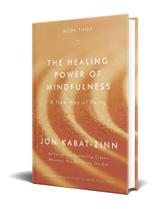
WHEN
WE TRULY GIVE OURSELVES OVER TO LISTENING TO THE BODY, THERE’S NO TELLING WHAT MIGHT OCCUR.
70 mindful April 2019 body awareness
Bookmark This
read…listen…stream
ANTHROPOCENE

Edward Burtynsky, Jennifer Baichwal, and Nicholas de Pencier • Goose Lane Editions
It’s a museum exhibit, a movie, a podcast, and a book—all in service of a bold notion that shakes you into an appreciation for just what human life on this planet means. The Anthropocene, so the hypothesis goes, is our current geologic age, wherein the largest effects are not a result of natural events (such as volcanism or glaciation) but rather the outgrowth of human habitation, and it is the current passion of master photographer Edward Burtynsky and his colleagues. The book and the movie depict stunning landscapes and tell poignant stories that let us know the depth of the effect we’ve been having during our short history on this rock. It’s one thing to read about it. It’s another to see pictures that put you in places you never would choose to go.
In 2017, the Garrison Institute honored Burtynsky as a contemplative—in the sense that his work causes you to pause and reflect. His enormous, sweeping, detail-rich pictures of “global industrial landscape”—mines, factory farms, and manufacturing plants, to name a few—convey a strange beauty, which is part of their allure. As in his acclaimed film and book Manufactured Landscapes, he invites us to linger on images not easily described as beautiful or ugly. They are simply striking. He is not a scold, telling us all that we’ve done wrong. He’s an artist and reporter, showing us the full spectrum of life on earth. If we admire the fine things the earth brings us, we ought also to appreciate what havoc may be wrought in places normally hidden. As Burtynsky’s colleague and collaborator Nicholas de Pencier said, “It is my responsibility to use my camera as a mirror, not a hammer: to invite viewers to witness these places and react in their own individual fashion.”
ANXIETY, STRESS, AND MINDFULNESS

A Do-It-Yourself Guide to Wellness
Andrew Safer • 2nd Tier Publishing
Mindfulness is often popularly characterized as focusing on a kind of bliss-filled, exultant present moment, as if life were an endless series of stunning Instagram posts. Andrew Safer knows differently. He himself has known hardship, and he’s worked with lots of people in difficult circumstances: youth in
crisis, prisoners, addicts, people struggling with mental illness. He teaches mindfulness in Newfoundland, a very earthy place, so he imbues Anxiety, Stress, and Mindfulness with a lot of heart and a celebration of the fact that mindfulness shines brightest when it helps us through our darkest hours.
A SLOTH’S GUIDE TO MINDFULNESS

Ton Mak • Chronicle Books
“Some days, everything is annoying,” observes author Ton Mak, a Shanghai-based artist and meditation enthusiast. “We forget the small happy things. Happy things that are already within us and around us.” Just such a small happy thing is the star of this book, a sloth—the most adorably lethargic critter out there—who in his “philoslothical” (arrrgh) relaxation
represents a counterpoint to our hurried and harried lives. The sloth illustrates basic methods for mindfulness meditation, breathing exercises, and guided visualization, while reflecting lightheartedly on how they help us move through life. Nothing comprehensive— but then, sometimes all we need is a gentle reminder to take it slow.
April 2019 mindful 71 reviews
THE SECRET WISDOM OF NATURE
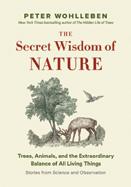
Trees, Animals, and the Extraordinary Balance of All Living Things
First with The Hidden Life of Trees, then The Inner Life of Animals, followed by The Weather Detective, and now The Secret Wisdom of Nature, Peter Wohlleben is on a roll. In each of these little books, released in rapid succession, Wohlleben presents scientific evidence with the exuberant wonder of your favorite high school teacher, the one who loved nothing better than a field trip to the woods.
The Secret Wisdom of Nature seeks to increase our empathy for the living things that surround us, including our fellow humans, and to take time to appreciate how important our home is—not the home that has walls, doors, windows, and a roof, but rather our bigger home. How easy it is to forget something so simple as the beauty and necessity of light, its life-giving power. When we see how vital the cycles of light and darkness are to the balance of nature, we can come to appreciate the consequences of our predilection to bathe the whole world in artificial light.
Wohlleben has been accused by fellow scientists of straying too far from science, of being too emotional, making trees and animals and even the weather seem human. In the epilogue, he defends his approach, asking whether “a language stripped of emotion” can “even be called a human language.” For Wohlleben, so long as we treat our natural world as just another machine, we will lack the empathy required to care for it as we would a beloved family member.
PODCAST Reviews
CBC RADIO
Episode: Wearables go beyond fitness tracking to help people with chronic health conditions
Rapidly evolving technologies are revolutionizing health science, a prime example being wearable health trackers—think the FitBit, but capable of feats like tracking the blood glucose of diabetics, or monitoring blood pressure, via a tiny patch on the skin. For people with chronic illness,
this may take the constant vigilance and guesswork out of maintaining health. But for healthy people, these devices—like self-driving cars that “remember” the route for us—may tempt us to ignore the feedback we’re always getting from our body, rather than growing to better understand that feedback.
ON BEING WITH KRISTA TIPPETT
Episode: The Magic Shop of the Brain, with Dr. James Doty
Most people don’t appreciate “the power of their intention to change everything,” says James Doty, a neurosurgeon who also directs Stanford’s Center for Compassion and Altruism Research and Education. He’s talking about the scarcely understood potential of the human brain, but also about the equally miraculous power
of compassion arising from it. Doty—for whom learning present-moment awareness as a teenager was transformative—considers our brains’ suppleness (that is, neuroplasticity) to hold the key to creating “an environment where we ultimately can flourish, and give those around us the opportunity to flourish.”
FREAKONOMICS RADIO
Episode: Think Like a Winner
When we say we’re “off our game,” it’s understood that there is a psychic aspect involved—a preoccupation, a case of the “blahs,” a nagging self-doubt. Whatever we’re seeking to improve at in life, being able to get back on our game is a crucial skill. In this episode, some well-known athletes describe how their
mental game impacts their competitive edge. For many professional athletes, for example, game prep includes affirmative self-talk and visualization. If that sounds a bit woo-woo, just take it from baseball legend Bob Tewksbury: “Confidence is a choice. A lot of people think it’s a feeling. But if you wait for that feeling, it may never come.”
Peter Wohlleben • Greystone
72 mindful April 2019 reviews
“...we’d do better to keep our hands off everything in nature that we do not absolutely have to touch.”
Build Resilience. Uncertainty is like fertilizer for difficult emotions. This meditation reminds you that life is always in flux and the most courageous thing you can do is slow down, turn toward your difficult emotions, and meet them with compassion. By staying with both the highs and lows of your inner experience, over time you become more resilient, meeting each moment with strength.



Respond with Calm. Anxious feelings often provoke us to act in habitual ways. For example, when you’re anxious you may find yourself chewing on your nails or lashing out at close friends. By practicing mindfulness, you can bring awareness to your experience and respond, rather than react, to the moment at hand. This meditation helps you open up, so you can choose whether to engage in a habitual action or simply stay with your feelings.



Create Space. When you dig into the storylines that trigger anxiety—whether it be memories, thoughts, or self-conditioning—you begin to give yourself the space you need to live with more ease. This practice helps you acknowledge your anxious feelings rather than fight them. This is a deep investigative practice that can be challenging at times and is best done when you feel safe, curious, and ready to fully explore your emotions.








TUNE IN
3 MEDITATIONS
CONQUER ANXIETY
1 2 3
TO Mindful
A 10-Minute Meditation to Work with Difficult Emotions from Carley Hauck A Simple Anxiety Practice from Hugh Byrne A Meditation for Your Anxious Emotions from Bob Stahl
TO
AND BUILD RESILIENCE
mindful.org for the best in mindfulness—daily practices, guided meditations, interviews, and more Meditation Cushions Inspirational Jewelry Home Furnishings dharmacrafts.com s i n c e 1 9 7 9 DharmaCraf ts MEDITATION SUPPLIES Call for Volume Pricing for Meditation Cushions 866.339.4198 Keycode MFA April 2019 mindful 73 reviews
Visit
SAY WHAT YOU MEAN A Mindful Approach to Nonviolent Communication
 Oren Jay Sofer • Shambhala Publications
Oren Jay Sofer • Shambhala Publications
In this era of polarizing rhetoric coming from everywhere, it’s just too easy to get caught up in the emotion of discourse without really…communicating. Say What You Mean by meditation teacher and mindful communication expert Oren Jay Sofer is surely a book for such charged times. But it’s also a book for anyone simply interested in learning how to deepen their own relational experiences, on any scale. And perhaps that should be all of us, for as Sofer writes, “What we say matters.”
Further, “Intention is the single most powerful and transformative ingredient in dialogue,” he writes. “It shapes our verbal and nonverbal communication, directing the course of a conversation.”
The book is structured around three fundamental skills for mindful communication: Lead with presence; come with curiosity and care; focus on what matters.

Through discussion and example, and supported by reflections and practices to ground the teaching, he helps us explore our own habituated styles of not just communication, but of viewing the world, and how this impacts how we speak to one another, and, importantly, how we listen.
The book is also chock-full of “ahas”—gems and statements that immediately hit you as important and true. Things like:
Everything we do, we do to meet a need.
The less blame and criticism in our words, the easier it will be for others to hear us. When someone trusts that we’re actually interested in understanding them… They can stop defending themselves and just hear what we’re saying.
To say what we mean, we must first know what we mean. To know what we mean, we must listen inwardly and discern what’s true for us.
At the end of each section Sofer offers a useful Q+A to explore the reality of wanting to follow the principles and guidelines of mindful communication, and getting tripped up in real time. The advice is succinct and practical and delivered with a bid for compassion, for ourselves and for everyone just trying to be understood.
74 mindful April 2019
IN TUNE
Music as the Bridge to Mindfulness
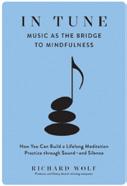 Richard Wolf • The Experiment
Richard Wolf • The Experiment
Award-winning music veteran Richard Wolf came to meditation (as have many musicians) with the need to maintain his health while staying in the heat of creative challenges. What he discovered, however, was a natural convergence of mindfulness and music, where each practice deepened the other. Meant for his fellow musicians at any level,

this book offers a plethora of music-based mindfulness exercises for the “transferrable virtues” music can cultivate, from the art of deep listening to (here we see Wolf’s technical savvy) “sympathetic vibrations” and silence. The point, says Wolf, isn’t necessarily becoming a better musician, but being more in harmony with yourself.
TALKING ABOUT DEATH
WON’T KILL YOU
The Essential Guide to End-of-Life Conversations
Dr. Kathy Kortes-Miller
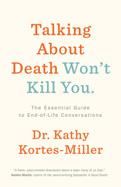
• ECW Press
It may be a truism that death is a part of life—but it’s a part of life that our society keeps out of sight and mind, and the avoidance isn’t healthy. The rise of interest in “death cafés,” public forums to host open discussions about death, is a sign we’re becoming more game to acknowledge our own mortality. When this happens, says the author, we’ll be able to “change the conversation
from something negative to one of understanding, compassion and acceptance.” Assistant professor of sociology in Thunder Bay, Ontario, Kathy Kortes-Miller offers this book, enriched by her own experience as well as research, to help us all prepare for and have these important conversations with the soon-dying, their families, friends, young children, and colleagues.
MindfulnessNorthwest.org
“In music the intuitive aspect of consciousness is tapped, nurtured, and encouraged; the same is true in contemplative practice.”
April 2019 mindful 75 reviews
Serving the Pacific Northwest since 2011
MINDFUL EATING ON THE GO Practices for Eating with Awareness, Wherever You Are Jan

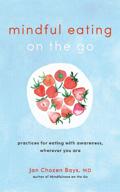 Chozen Bays, MD • Shambhala Publications
Chozen Bays, MD • Shambhala Publications
To consume food or drink, these days, is not only about keeping ourselves alive. It’s about constantly measuring our diets and our body image against the thousands of ads and other messages about food that we’re bombarded with, day in and day out. It’s hardly news that this inescapable reality can do a number on our ability to freely enjoy
our food. For those who want to reclaim that freedom, this pocket-size book on the key principles of mindful eating is a great place to start. Chozen Bays teaches how we can discern the “nine aspects of hunger” that we experience, approaching our needs and cravings with full, nonjudgmental awareness, so we can heal our relationship with food.
DRAW & BE HAPPY Art Exercises to Bring You Joy
 Tim A. Shaw and Cachetejack • Chronicle Books
Tim A. Shaw and Cachetejack • Chronicle Books
This colorful, upbeat book is as delightful to look through as it is to practice from. Full of bright, bold graphics, Draw & Be Happy offers 75 exercises to explore art as a means of mindful relaxation, creative brainstorming, and
just plain fun. From practicing “calming curves” to drafting a “visual” shopping list, there are plenty of opportunities for anyone—no matter what their skill level—to grab a pen and paper and explore their creative side. ●

E n j o y $ 2 5 o f f y o u r f i r s t o r d e r 76 mindful April 2019 reviews
“Mindful eating is an adventure marked by curiosity, investigation, discovery, and an increasing sense of being liberated.”
mindful marketplace
Welcome to Mindful Marketplace, our catalog of unique products and services for people who want to live with more awareness and authenticity. Marketplace also provides an affordable and elegant way for advertisers to reach and engage our highly committed readers.

To advertise in Mindful’s Marketplace, please contact us today!
Marketplace Advertising
Chelsea Arsenault
902-706-3075
chelsea@mindful.org
New Special Edition from Mindful
Mindfulness can sound like it’s a big complicated concept, but it’s actually a simple idea—doing what we can to be present where we are right now—that has a lot of different dimensions, which are explored in the pages of the latest special edition from Mindful.

Learn how to let go of self-criticism, open to the fullness of being, and live with more compassionate and open-hearted awareness.
Healthy Mind, Healthy Life is essential reading for anyone interested in living a healthier and more fulfilling life.
mindful.org/GetStarted
Miami Beach Meditation Studio Seeks Investors on Path to 100+ Franchises
"Meditation is outpacing yoga in terms of its comparative growth trajectory and is projected to be double the size of the yoga industry."
(Marketdata Enterprises, 2017 US Meditation Market Report)
Innergy Meditation is a boutique studio in Miami Beach, offering guided mindfulness and meditation classes without the trappings of

religion. No posturing, no pretense— just come as you are, breathe, chill, and be still. Innergy has experienced 300% growth in members vs. last year, and 150+ new unique clients monthly. Seeking Investors/Partners to grow into a network of 100+ studios.
Email: paul@innergymeditation.com
Become a Mindfulness Specialist
The University of the Fraser Valley’s graduate certificate in Mindfulness-Based Teaching and Learning is one of the first of its kind in North America. This 10-month, part-time program provides advanced, specialized training for everyone including health care, education, social work, and criminal justice professionals. Learn how to design and facilitate mindfulness programs based on the latest research and best practices through a combination of online, blended,
and face-to-face studies. You also have the option to become certified as a Mindfulness-Based Stress Reduction (MBSR) or MindfulnessBased Cognitive Therapy (MBCT) facilitator.
Apply today at: ufv.ca/mbtl
Seonaigh.MacPherson@ufv.ca
adulted@ufv.ca

1-604-864-4621
Toll-free: 1-888-823-8734
marketplace April 2019 mindful 77
Ready to Become a Mindful Erotic Team?
Sex is complicated in long-term relationships! We’ll help you get your groove back, mindfully.
Our foundation retreat offers tools to revitalize your sex life and create a loving, pleasurable, and deeply connected erotic relationship.

August 9-11, 2019, Portland, OR.
www.passionandpresence.com
Three Award-Winning Children’s Books on Mindfulness

Dr. Sileo’s newest children’s book Bee Calm: The Buzz on Yoga tells the story of Bentley Bee noticing his friends doing some funny poses in the garden. It’s yoga! He learns what that is and does several poses in this kid-friendly introduction to yoga.
Bee Calm is a companion book to Dr. Sileo’s award-winning Bee Still: An Invitation to Meditation. This book teaches children how to use meditation to focus, feel calm, and soothe difficult feelings.
His Award-Winning book, A World of Pausabilities: An Exercise in Mindfulness, teaches children how days are filled with endless opportunities to take a mindful pause, and ways they can apply mindfulness every day.
To order these books: Amazon.com drfranksileo.com
Cloud Meditation Bench Set
Meditation Bench supports a Cross-Legged Posture:

• More Grounded than Chair Meditation
• Includes 2" Cloud Bench Cushion and Zabuton Mat
• Easy Assembly, 7 lbs.
Save 5% on any Cushion, Bench or Set using the (one-time) code MINDFUL at checkout.
Samadhi Cushions 1-800-331-7751
www.SamadhiCushions.com
Buddhist Practices for Your Mind & Heart
Get a FREE preview of How to Meditate, a special edition from the editors of Lion's Roar. Learn the basics of mindfulness and other forms of Buddhist meditation, from trusted readers’ favorites like bestselling authors Sharon Salzberg and Matthieu Ricard. Also included

are inspiring stories, answers to common beginners’ questions, advice and resources for sticking with meditation, and much more.
Visit the link below to receive a FREE preview of How to Meditate: lionsroar.com/MFL
Pause… Take a deep breath… Re-Frame your thoughts…
Your Mindfulness Solution - a simple tool to help add gratitude, awareness and meaningful moments to your busy life.
Your meaning to pause® bracelet provides a private, gentle vibration every 60 or 90 minutes, prompting you to pause from whatever you are doing and reframe your thoughts.

There are endless ways to decide how you will use your pauses throughout the day.
Available in natural stone, mala beads, sterling silver and more. PAUSE NOW to create a custom bracelet that inspires you and get 20% off your order by using code: PAUSENOW at shop.meaningtopause.com

marketplace 78 mindful April 2019
Call today to set up a free coaching session
Today could be the day you begin to dare greatly, remove obstacles, and discover the truest version of yourself.
Certified Life & Spiritual Coach
Certified Enneagram Practitioner in the Narrative Tradition
404-933-6524
gracefullivingcoach@gmail.com
gracefullivingcoach.com
Breast Cancer Meets

Mindfulness:
Surrendering to Life
Cheryl sees the specter of cancer and inquires deeply into her fear. When her mind wants to know, wants to know, wants to know the unknowable future, she calms her anxiety with self-talk and returns her attention to the present moment. Mindfulness. Here. Now.

www.breastcancermindfulness.com
Cultivating Emotional Balance
is an evidenced-based training which utilizes emotion as a path for self-transformation and collective well-being. Upon request from the Dalai Lama, Drs. Paul Ekman and B. Alan Wallace established CEB in 2000.
2020 year-long teacher certification is open, two retreats, online coursework.

http://cultivating-emotionalbalance.org
ceb.course@cultivatingemotionalba lance.org
Mindfulness Box
A monthly subscription box promoting mindfulness, inner peace and balance by giving you the tools to live with more intention and in the present moment. Each month you will receive 4 - 5 thoughtfully curated items. Use MINDFUL20 for 20% off your first subscription purchase!
www.mindfulnessbox.com
contact@mindfulnessbox.com
Theoderma Skin Care - Redefining Natural
A natural, results-driven line, mindfully crafted by a skin care expert to be effective yet gentle AND free of harmful chemicals.

Preparing our powerhouse botanical extracts on-site, we guarantee the purity of our natural products with a 30-day no-hassle return policy.
Proudly certified by both Vegan Action and Leaping Bunny for vegan, cruelty-free products you can trust.
We have a complete line of facial products for every skin type. Just answer a few simple questions, using our Meet Your Match feature, to get your personalized regimen—or email our expert for one-on-one advice.
Enjoy 20% off your first order—use promo code MINDFUL
TheodermaSkinCare.com
Info@TheodermaSkinCare.com
Mindfulness & Meditation for Kids
Award-winning author Whitney Stewart creates mindfulness books to provide children with tools to nurture inner peace. Her two upcoming releases (April 30, 2019 from Barefoot Books) are board books for preschool- to kindergarten-age children. Mindful Tots: Tummy Ride provides simple breathing exercises to help toddlers learn to soothe themselves. Mindful Tots: Loving Kindness introduces

small children to a mindfulness practice designed to nurture compassion toward oneself and others.
Whitney teaches the methods she writes about when speaking at schools and conferences and in her workshops at yoga studios, fitness centers, and women’s groups.
www.whitneystewart.com
whitney@whitneystewart.com
marketplace April 2019 mindful 79
mindspace
notice what you notice

80 mindful April 2019 By Gemma Correll
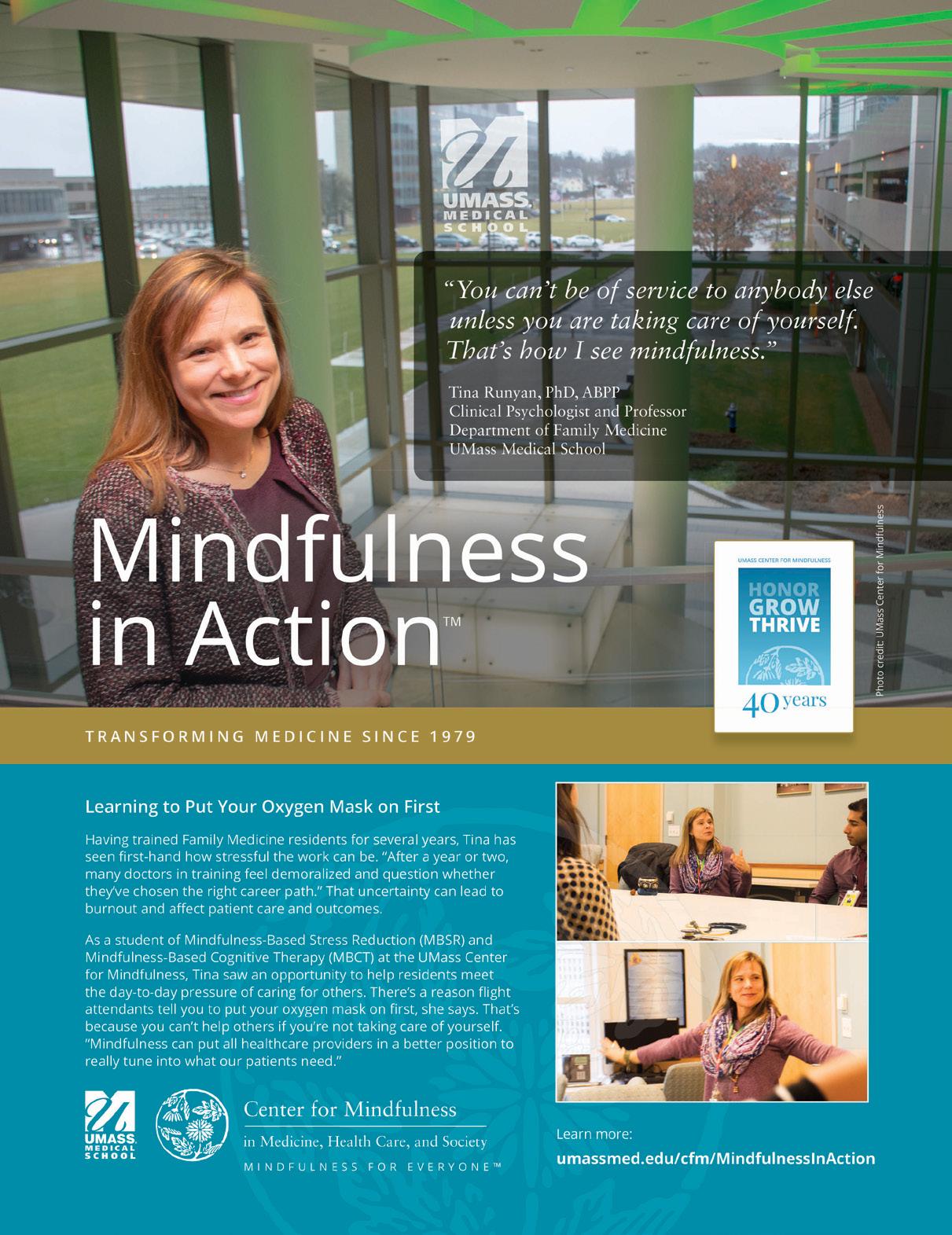




















 Barry Boyce Editor-in-Chief barry@mindful.org
Barry Boyce Editor-in-Chief barry@mindful.org













 James Gimian Executive Director
James Gimian Executive Director






















 by AMBER TUCKER illustrations by JESSICA RAE GORDON
by AMBER TUCKER illustrations by JESSICA RAE GORDON






































































 By Victoria Dawson • Photographs by Stephanie Diani
By Victoria Dawson • Photographs by Stephanie Diani














 By Barbara Paulsen
By Barbara Paulsen






 BY JOSHUA SIMPSON
BY JOSHUA SIMPSON




























 Oren Jay Sofer • Shambhala Publications
Oren Jay Sofer • Shambhala Publications

 Richard Wolf • The Experiment
Richard Wolf • The Experiment



 Chozen Bays, MD • Shambhala Publications
Chozen Bays, MD • Shambhala Publications
 Tim A. Shaw and Cachetejack • Chronicle Books
Tim A. Shaw and Cachetejack • Chronicle Books


















